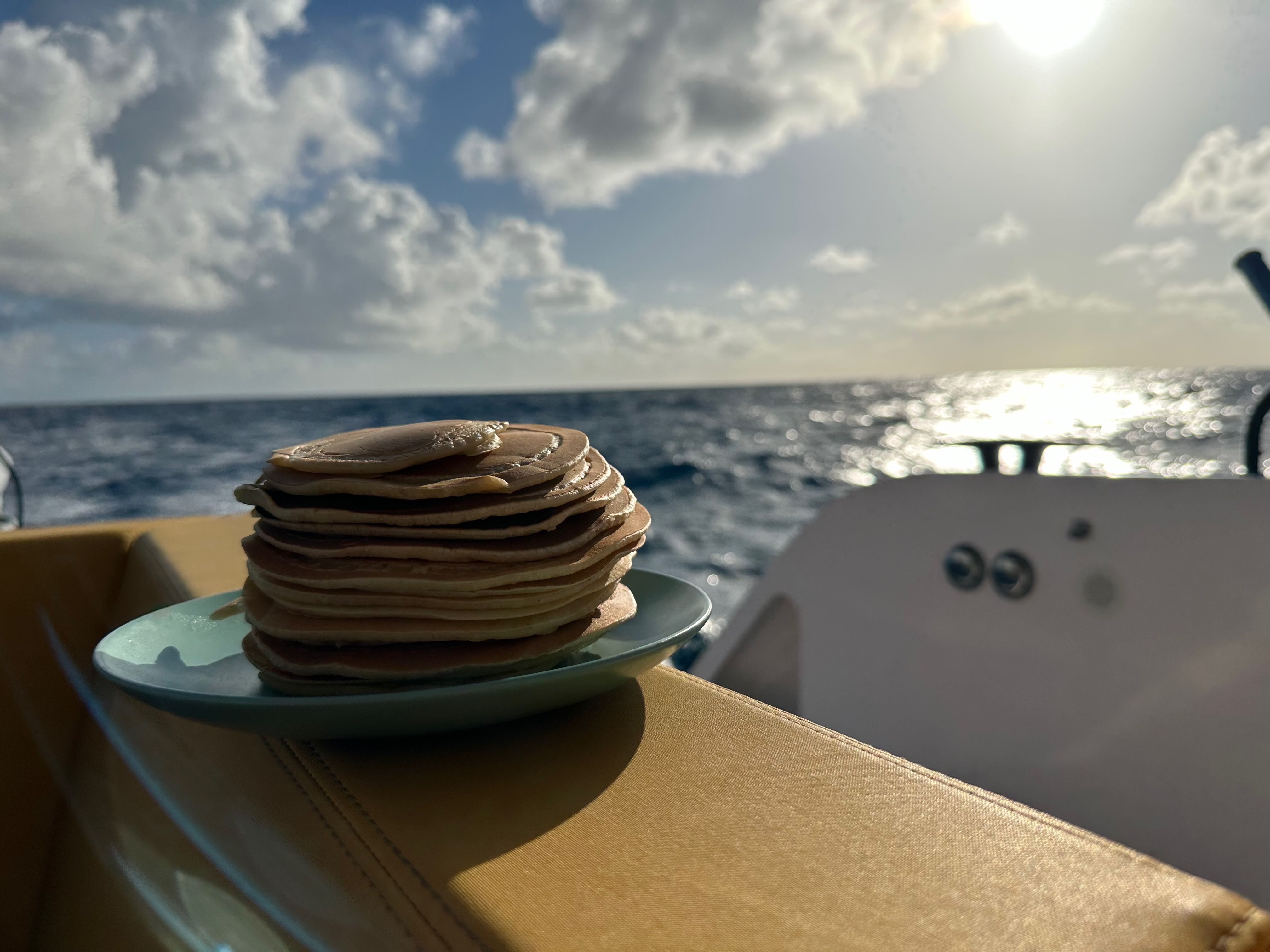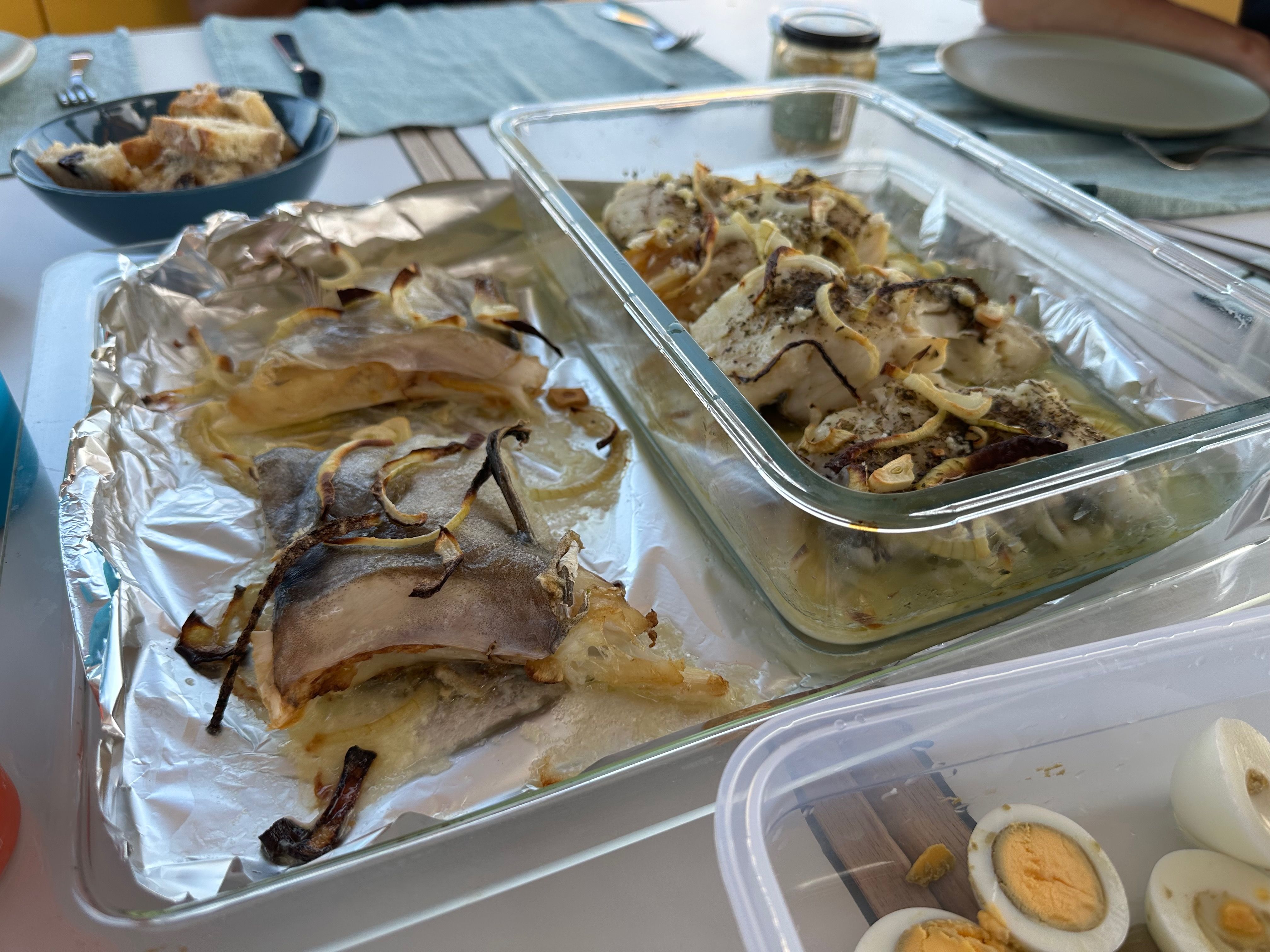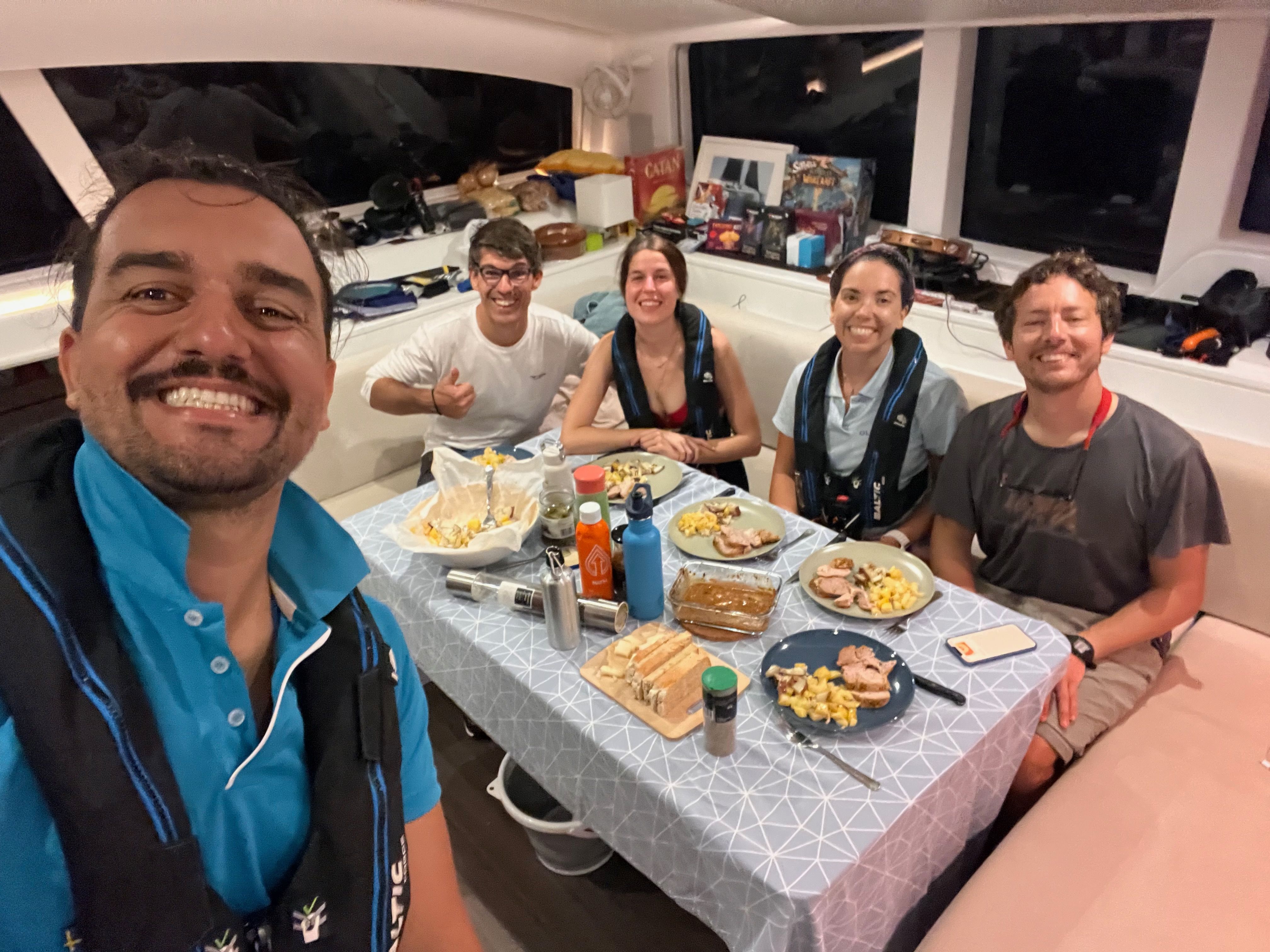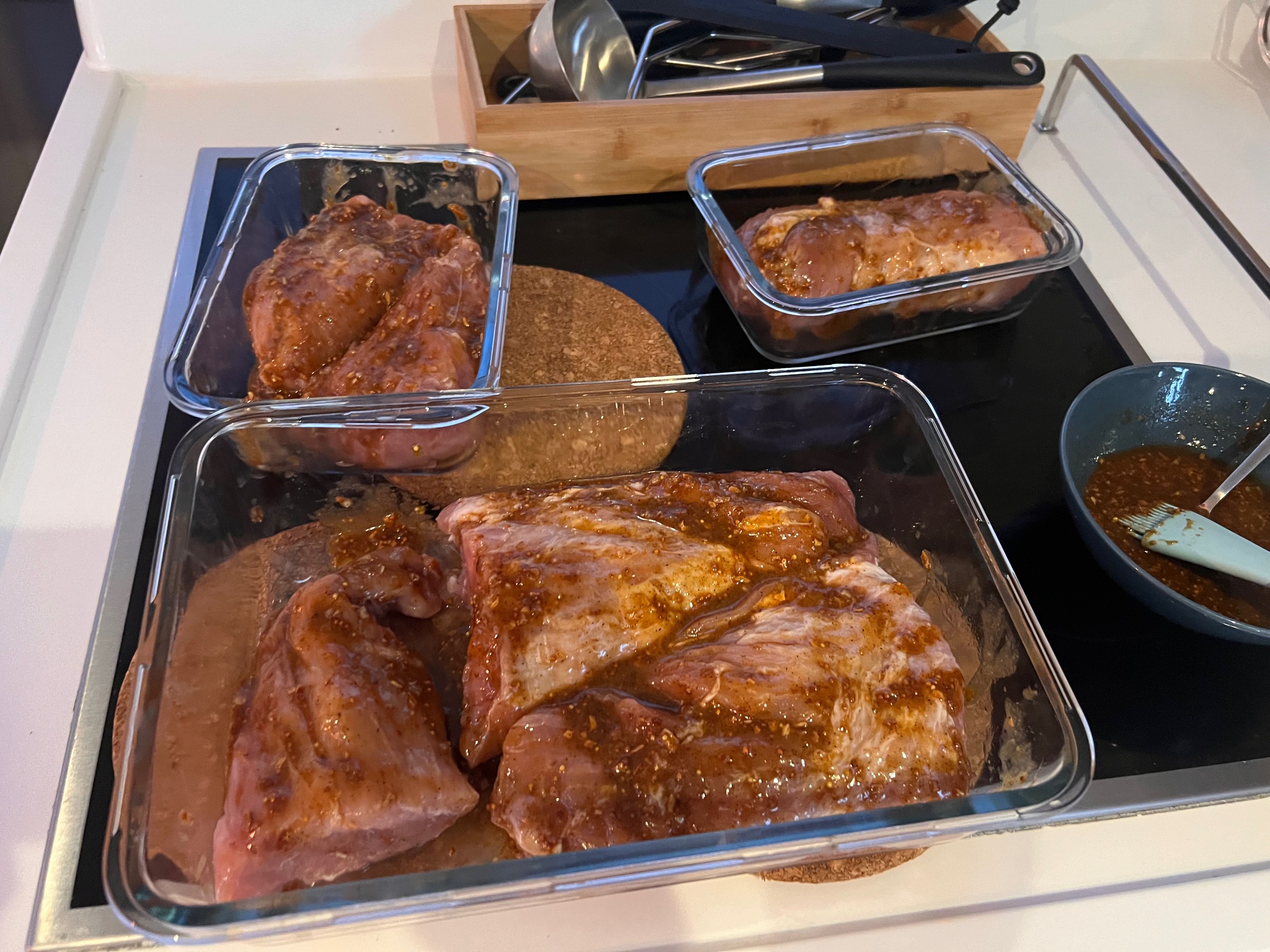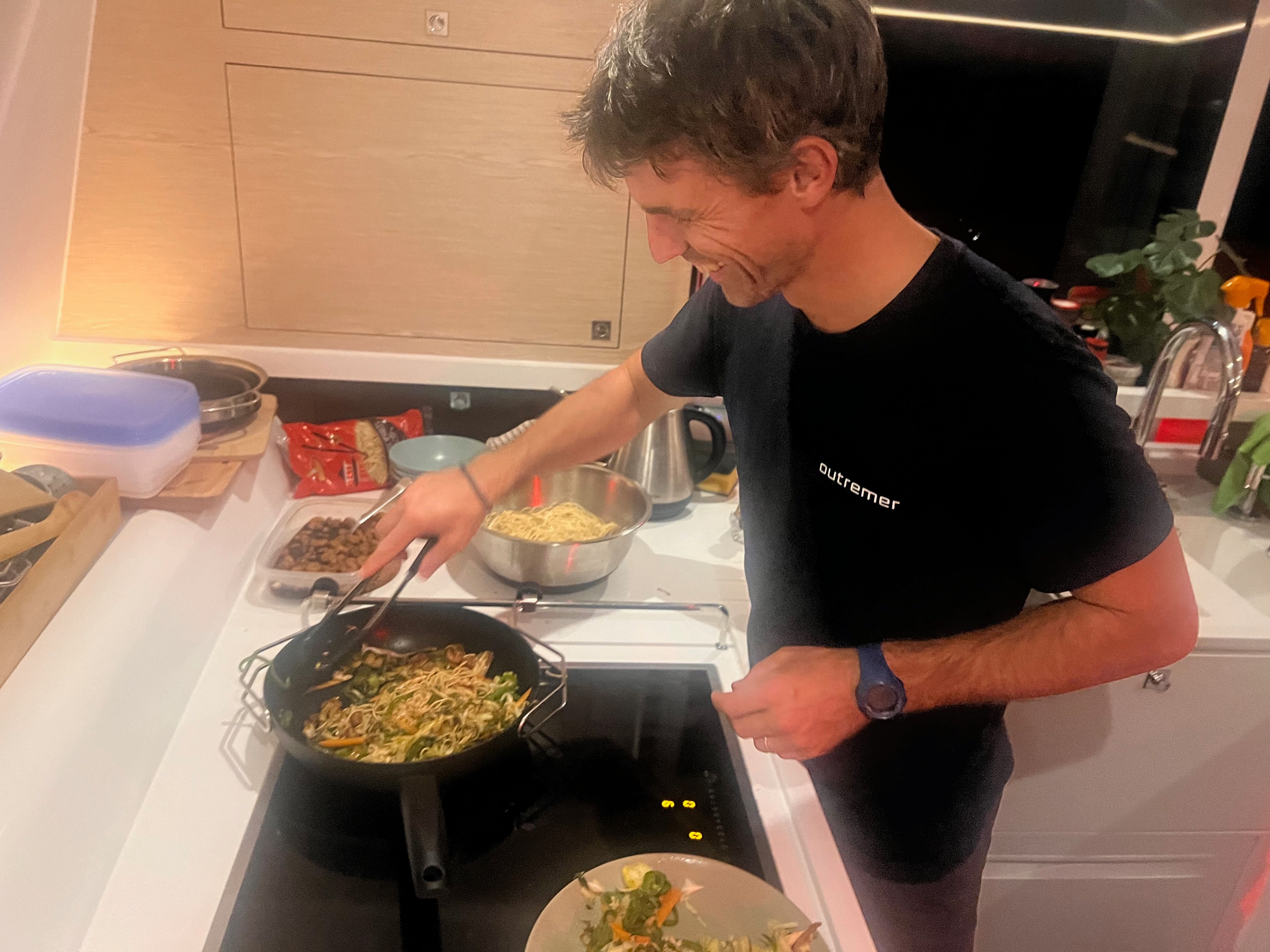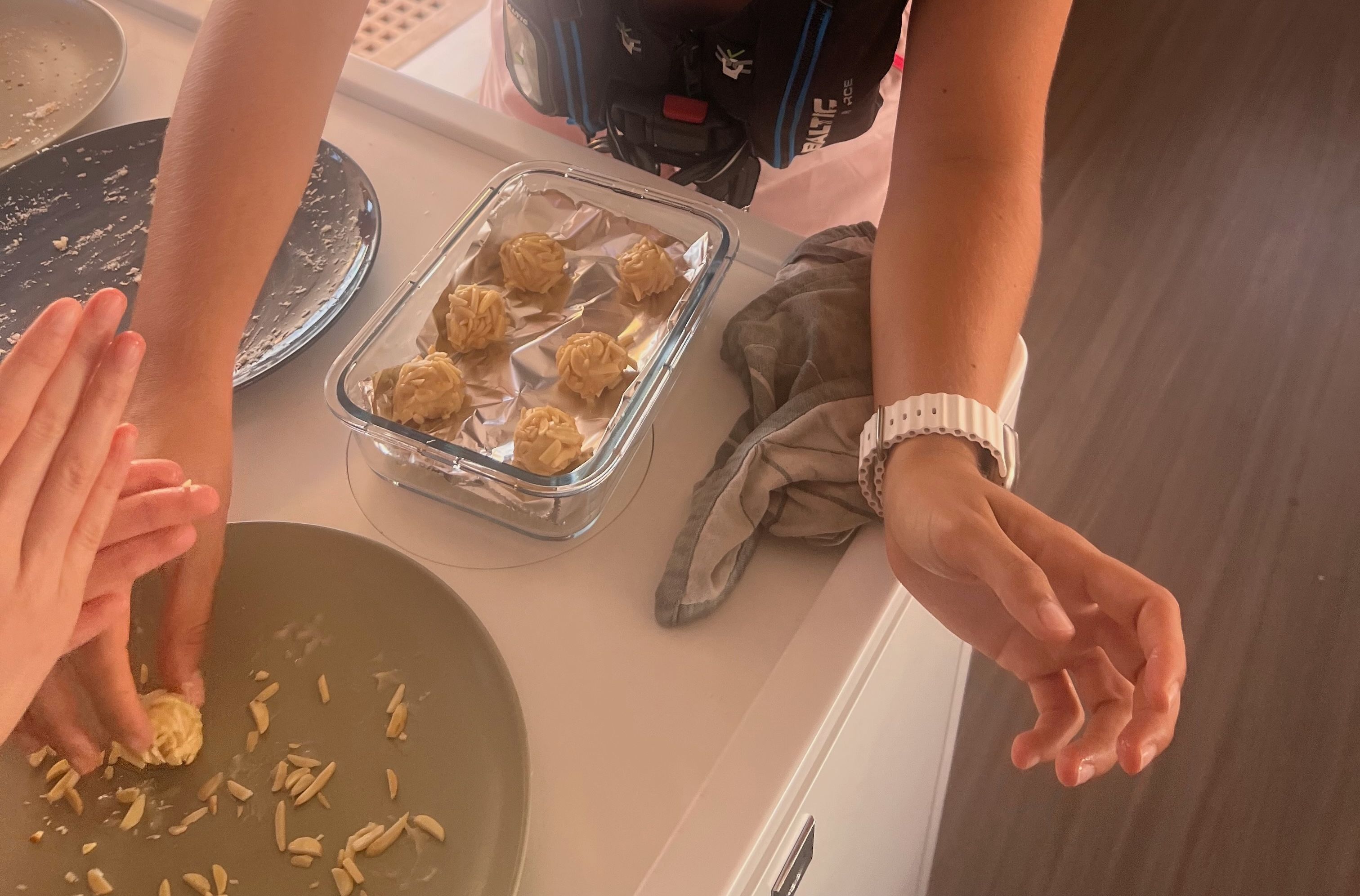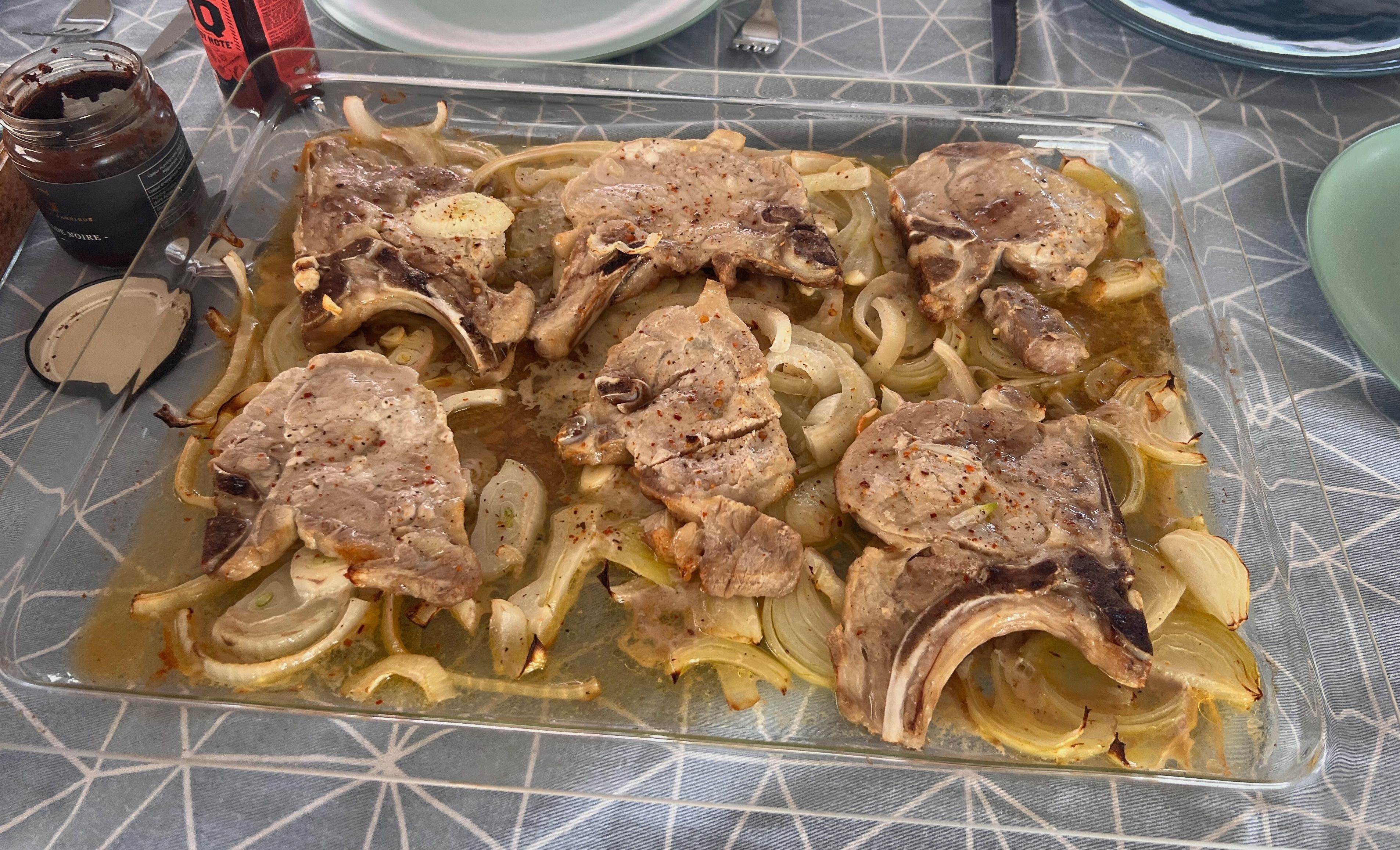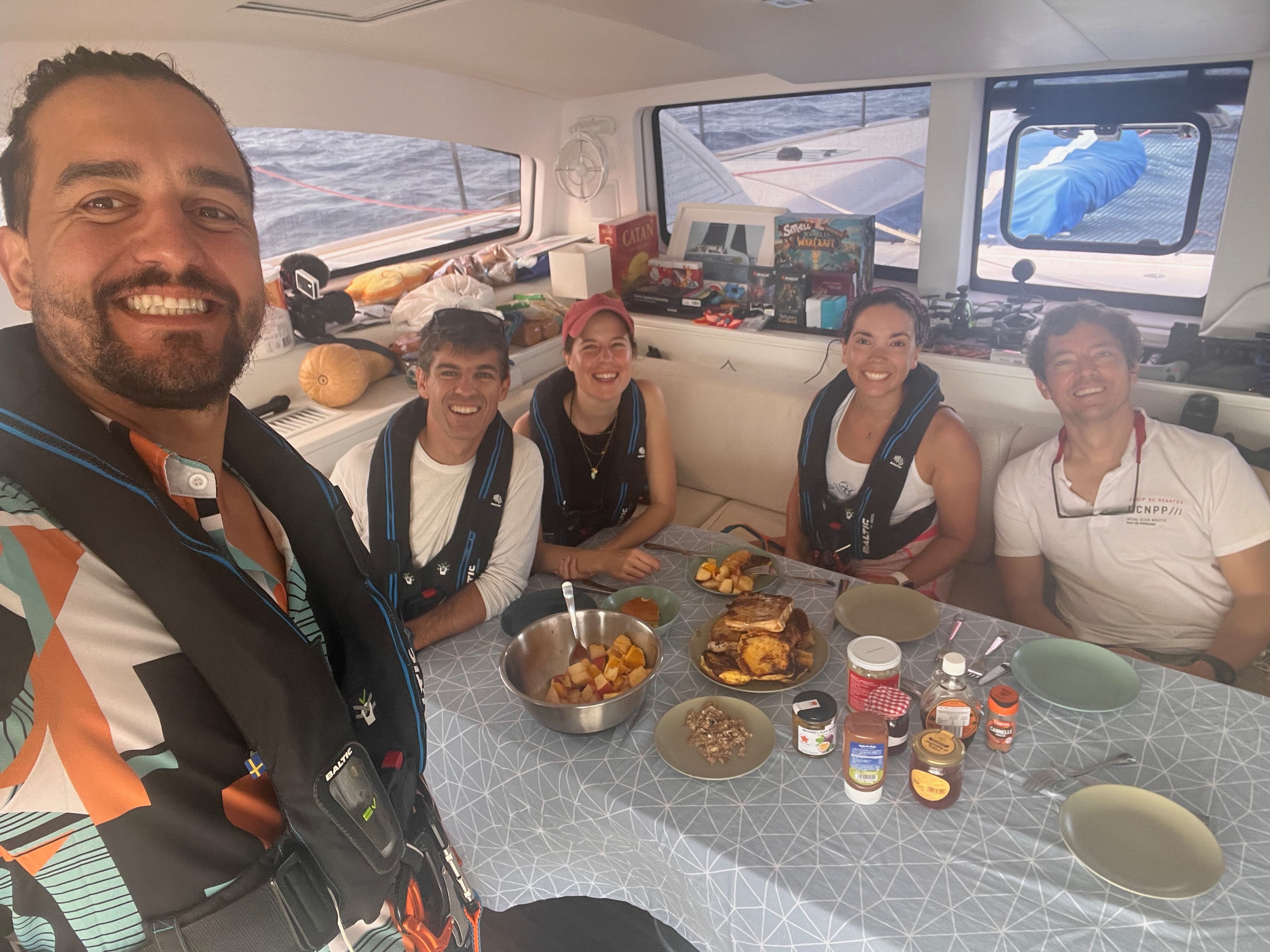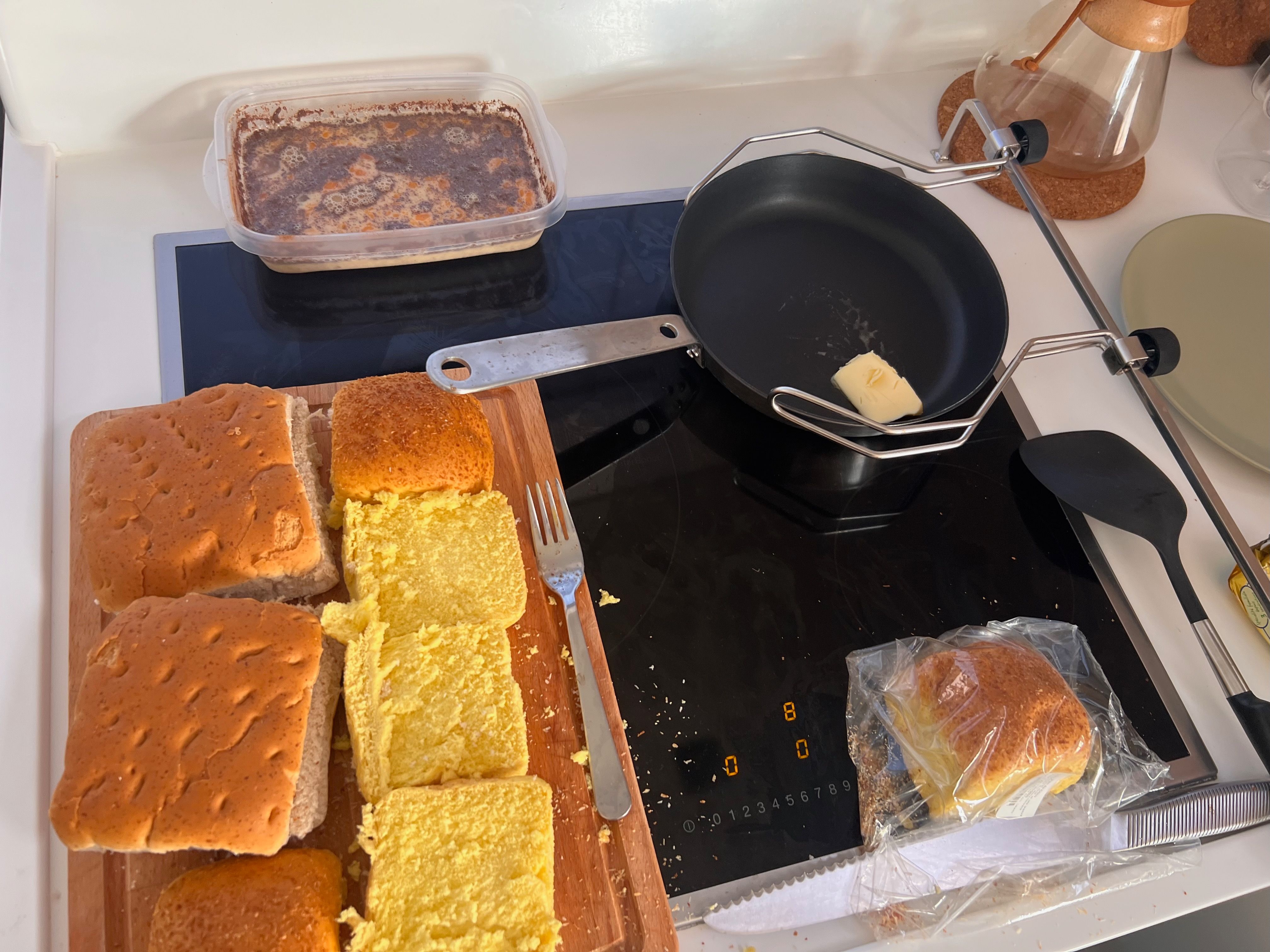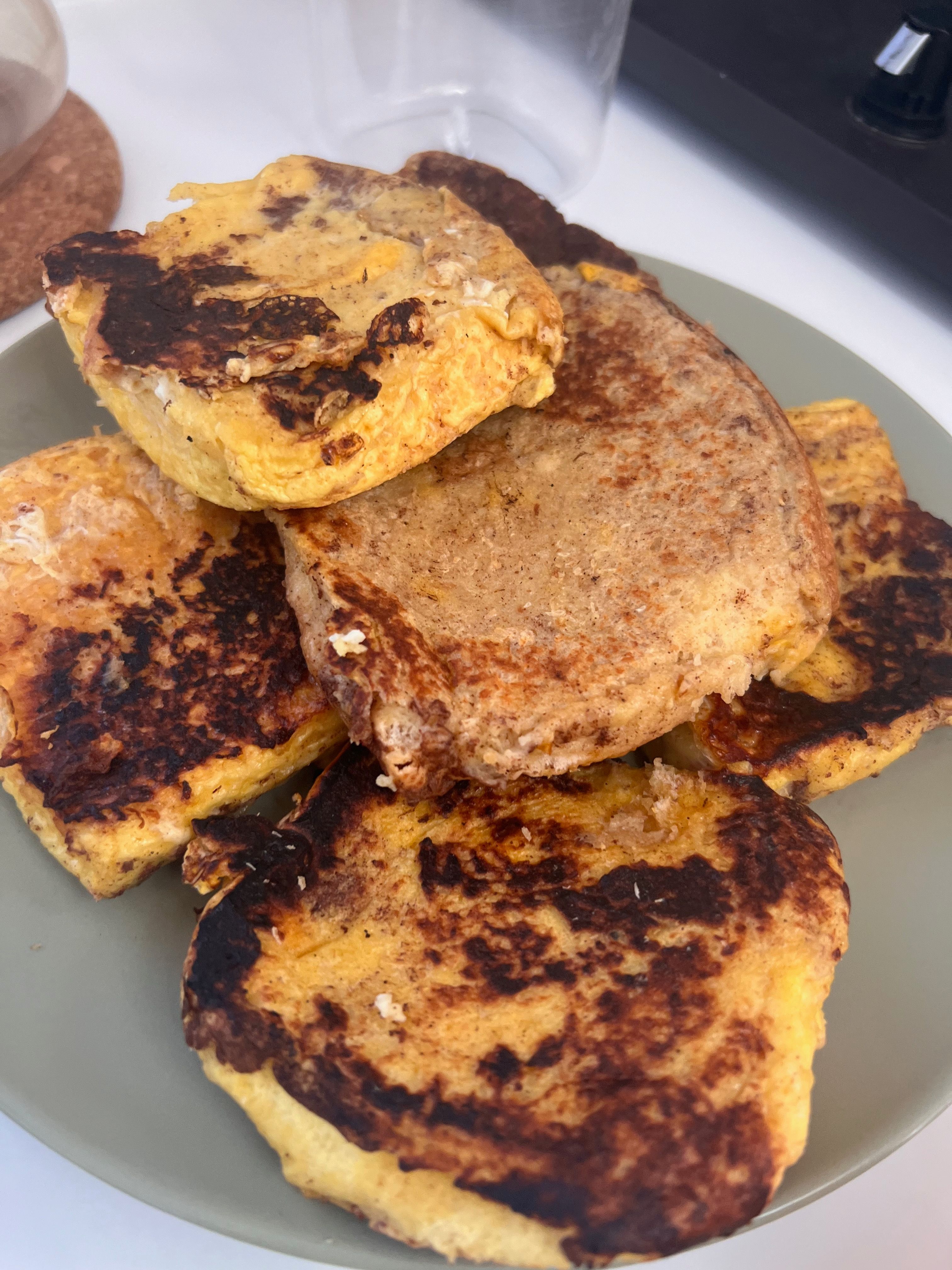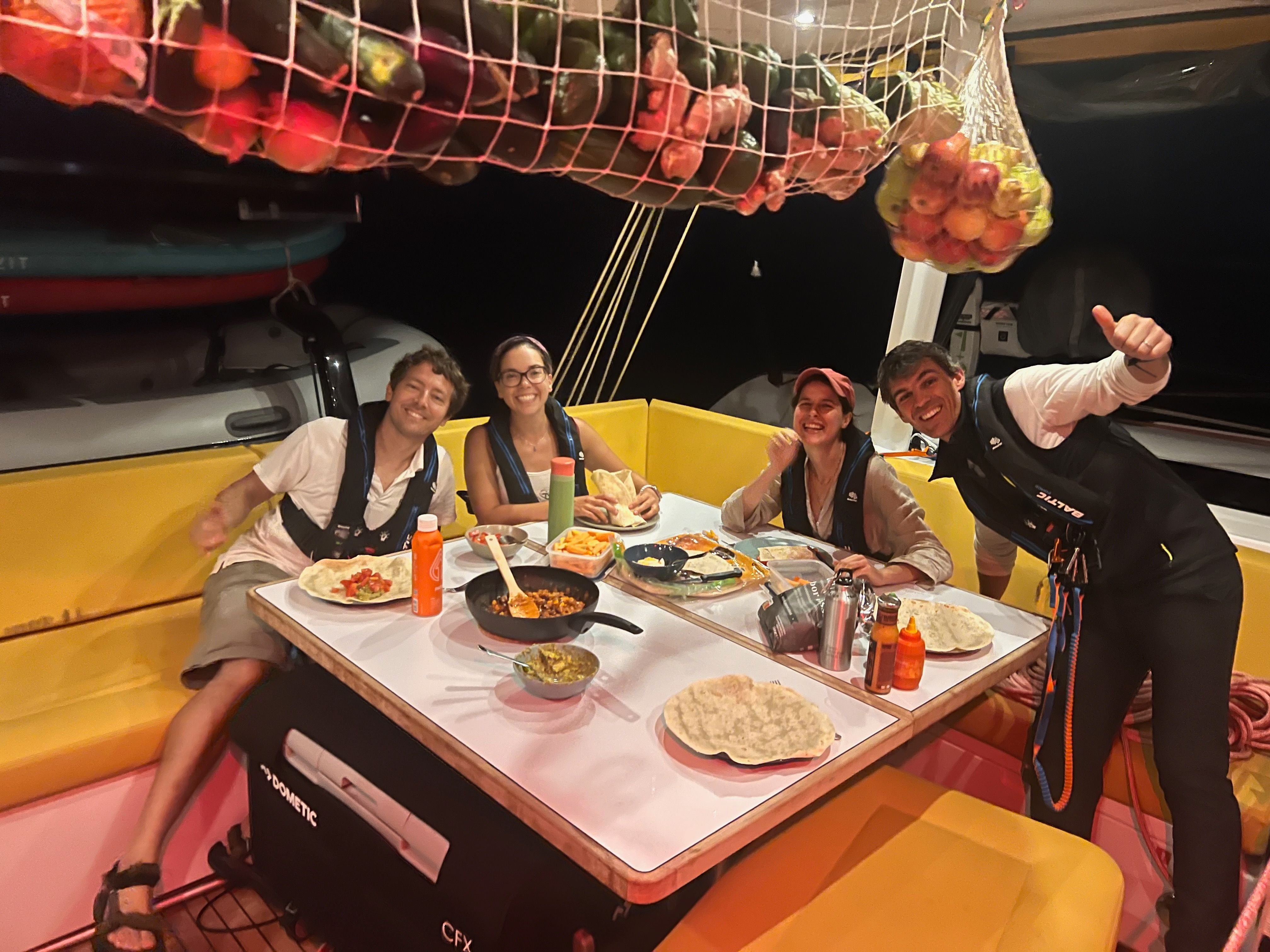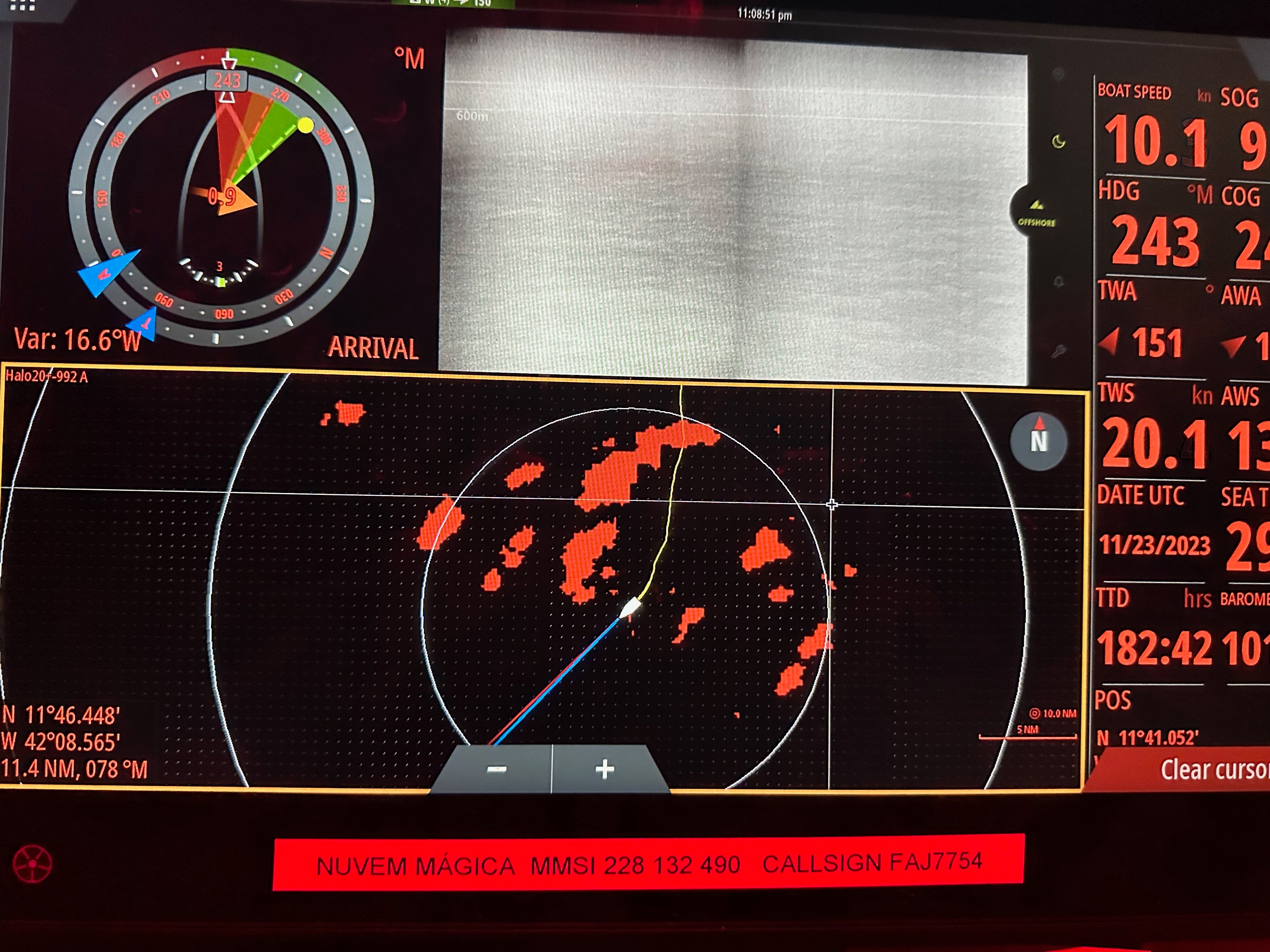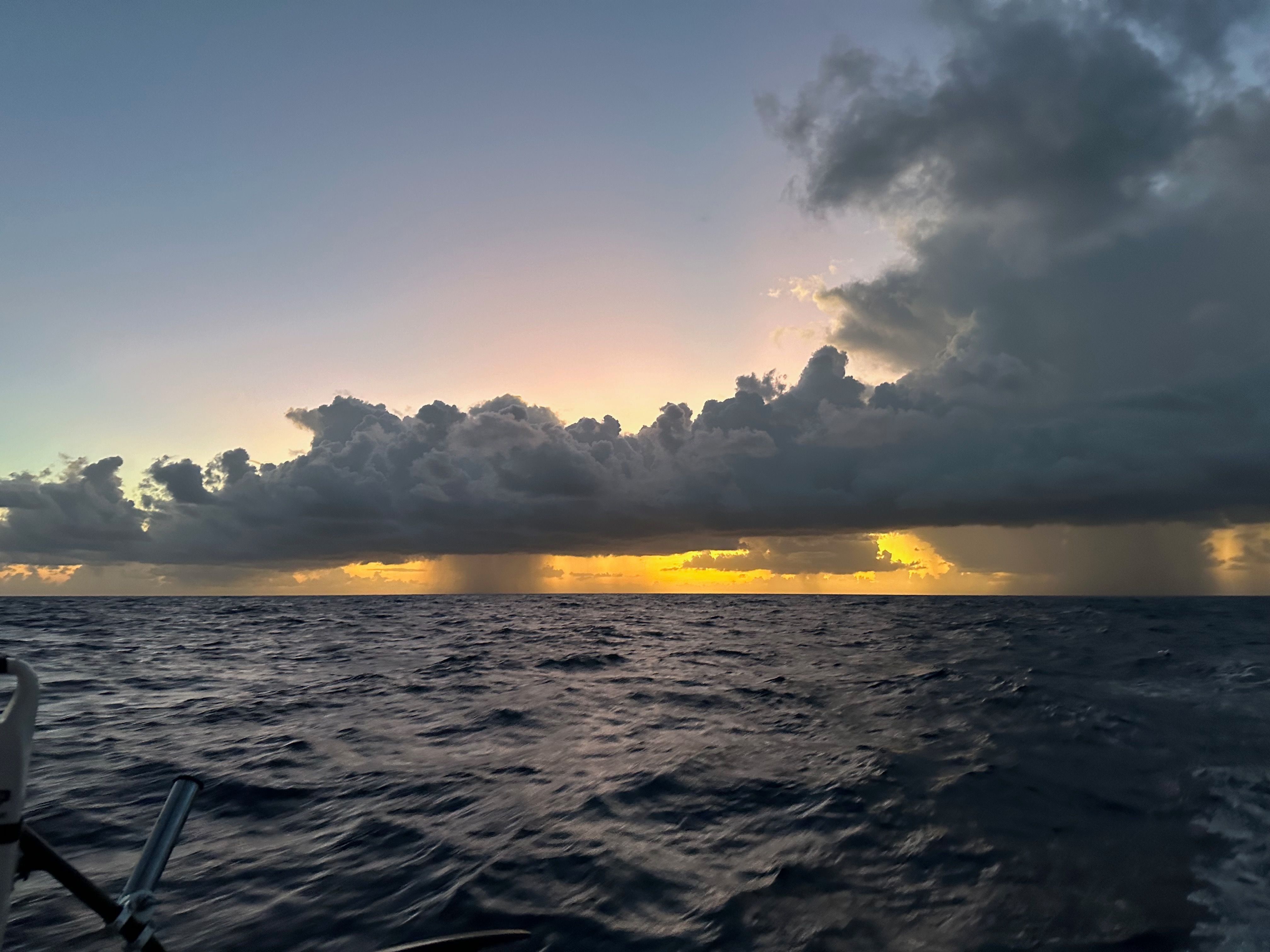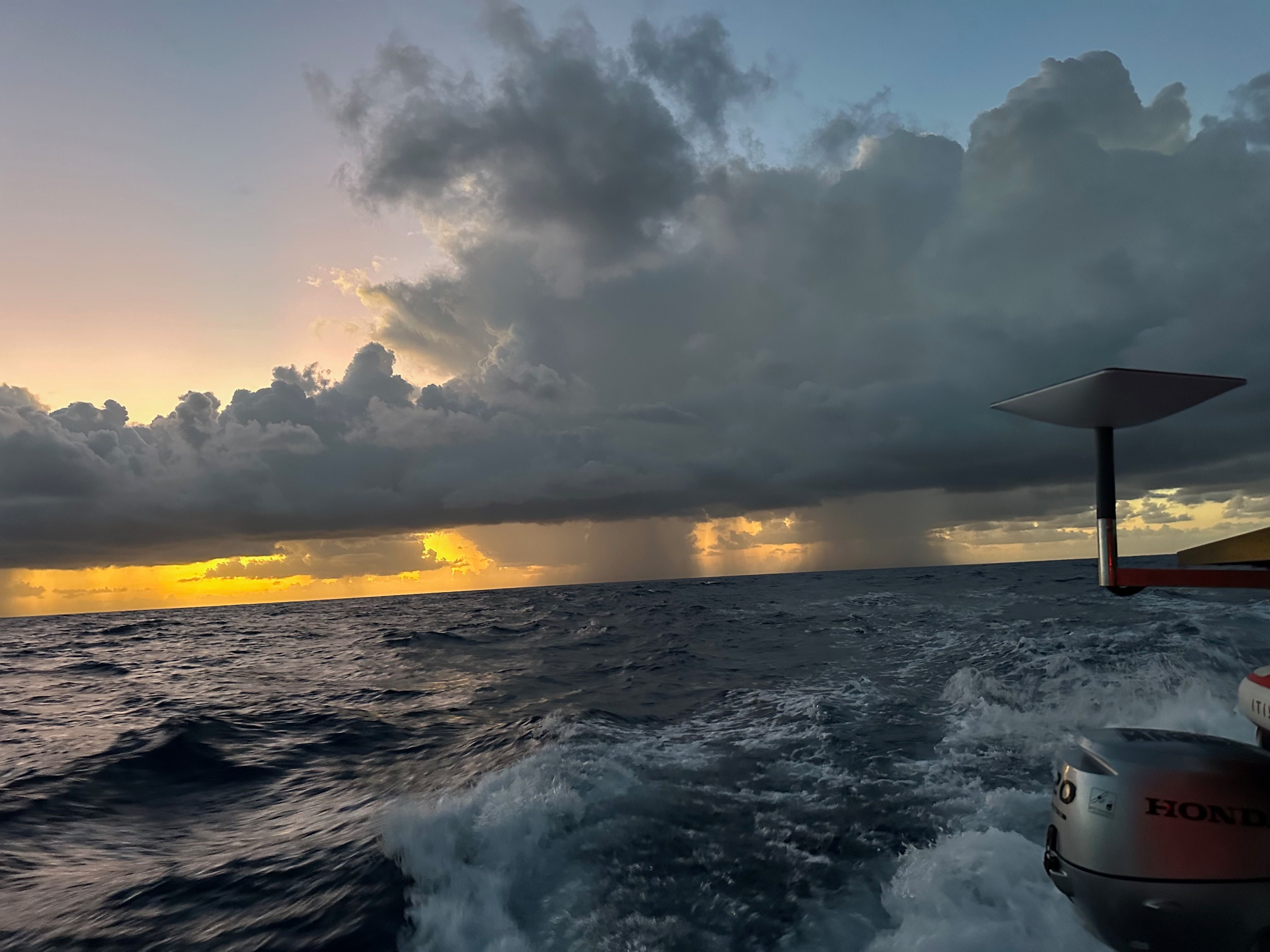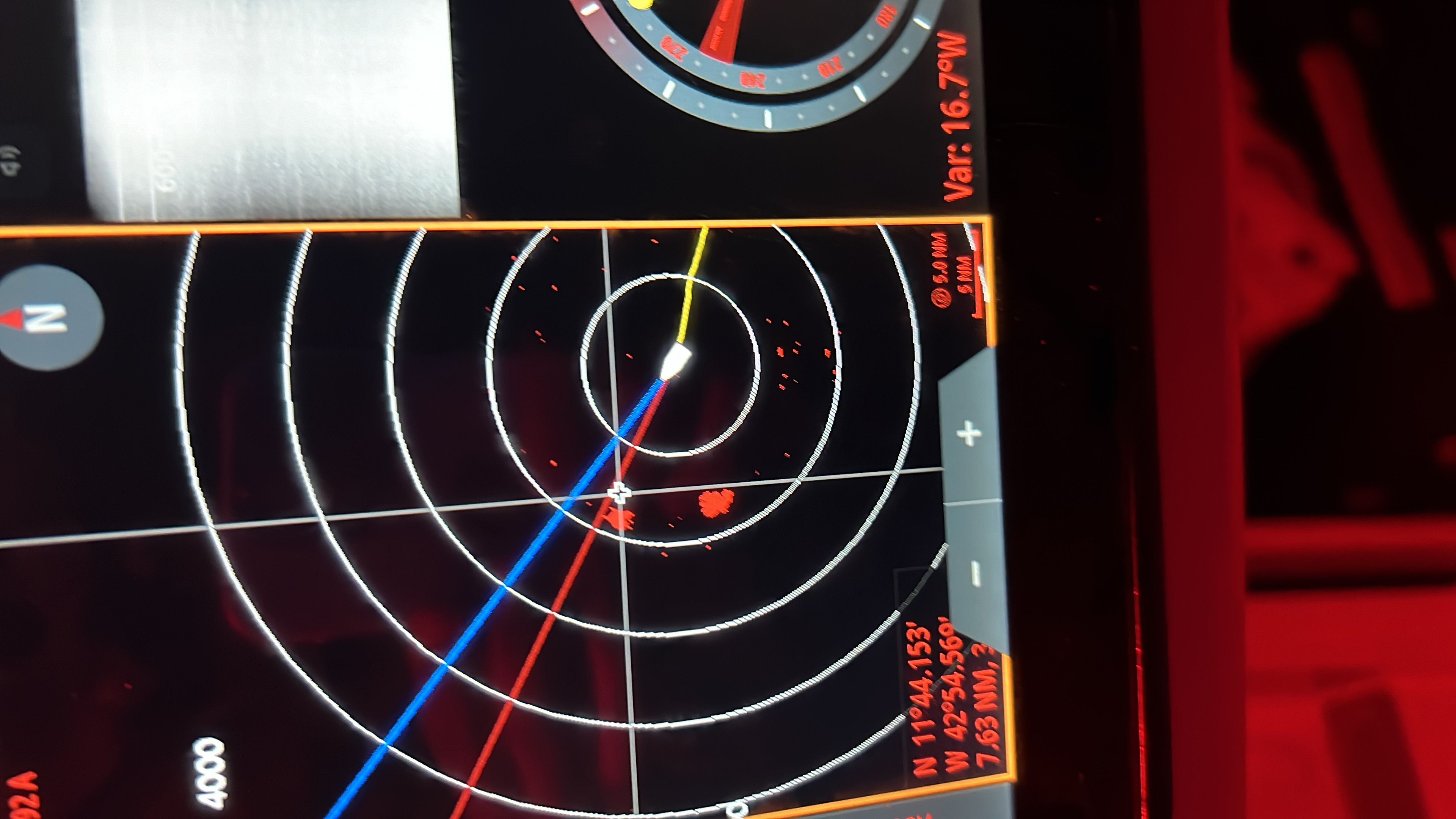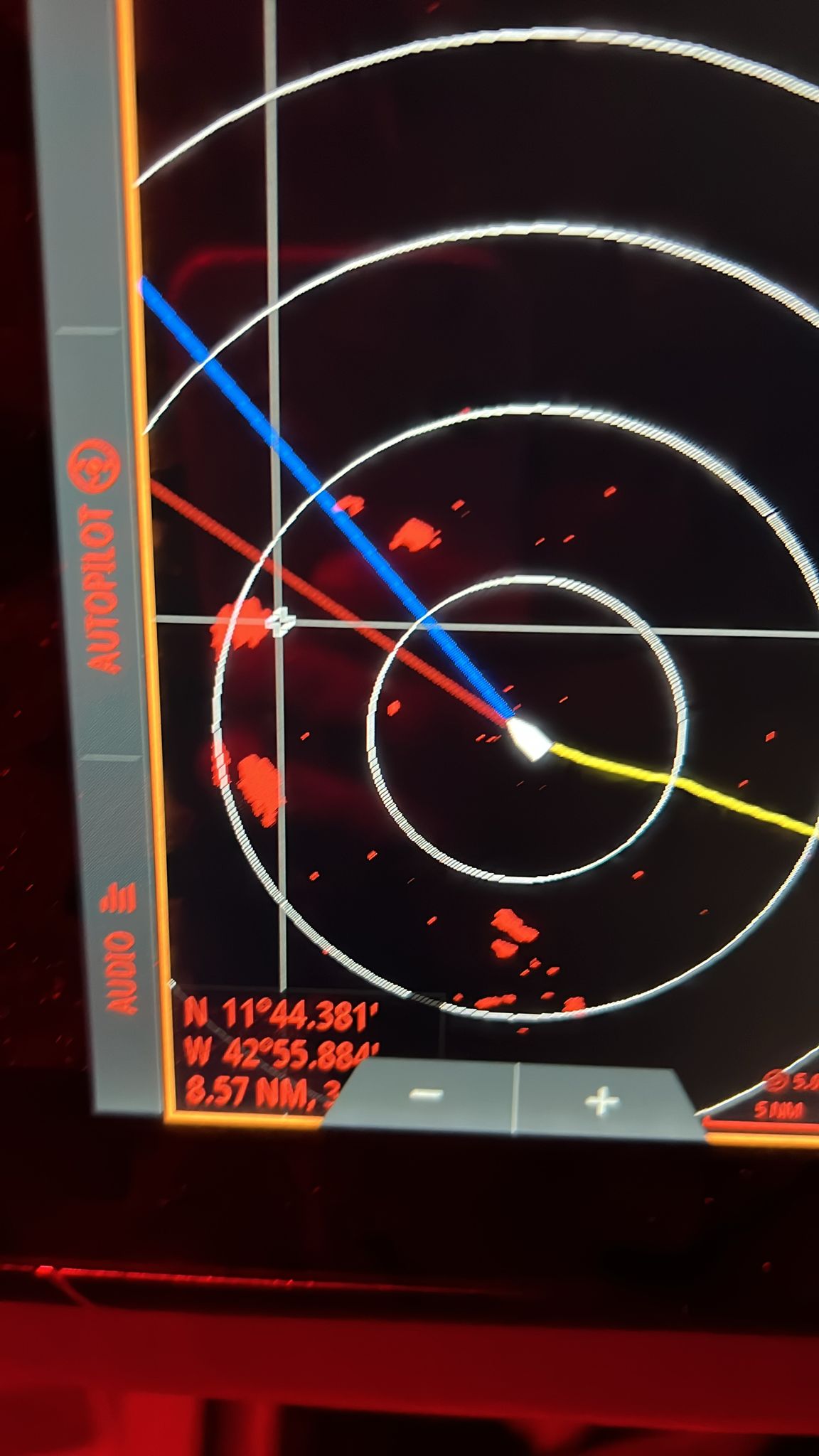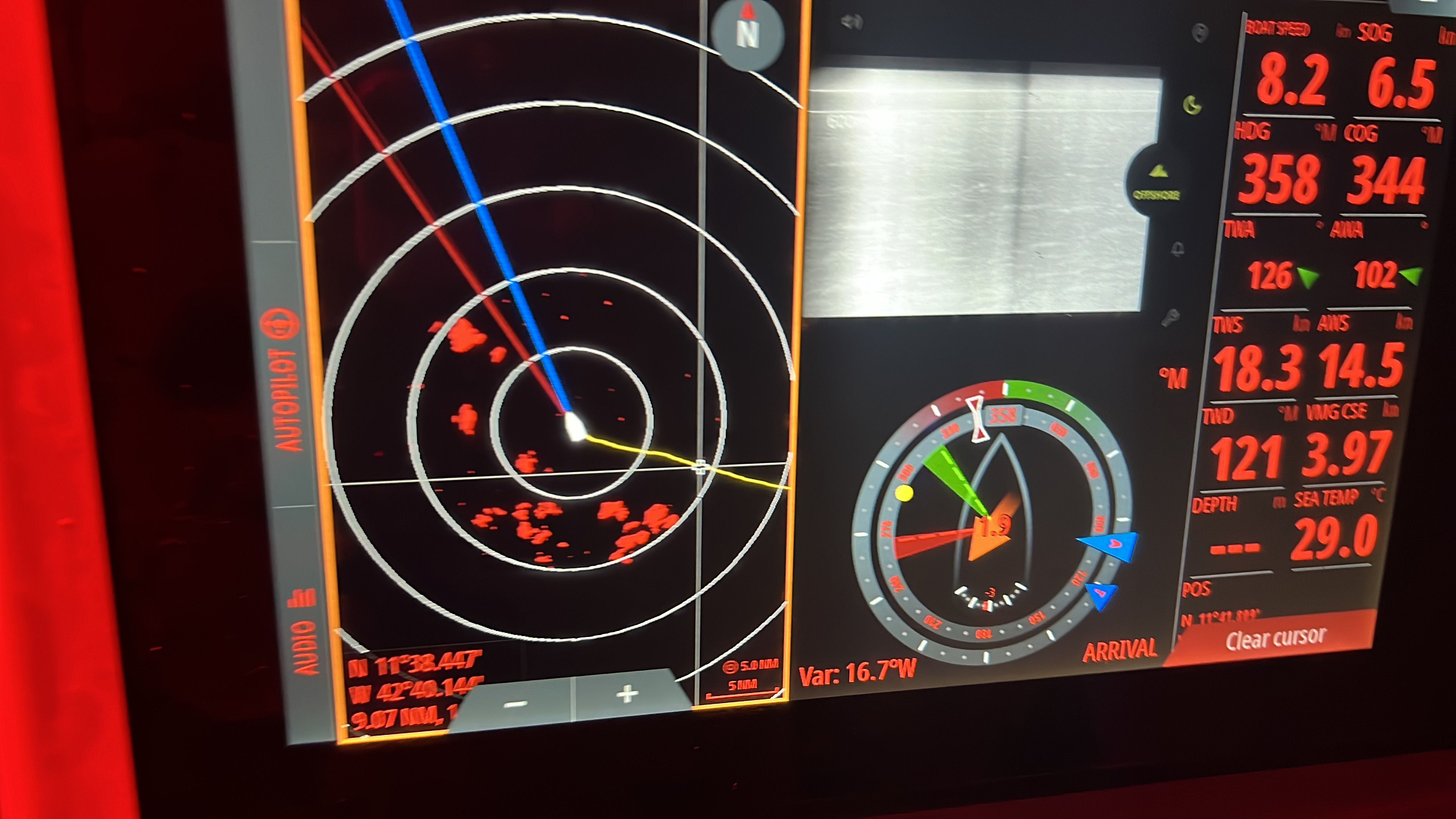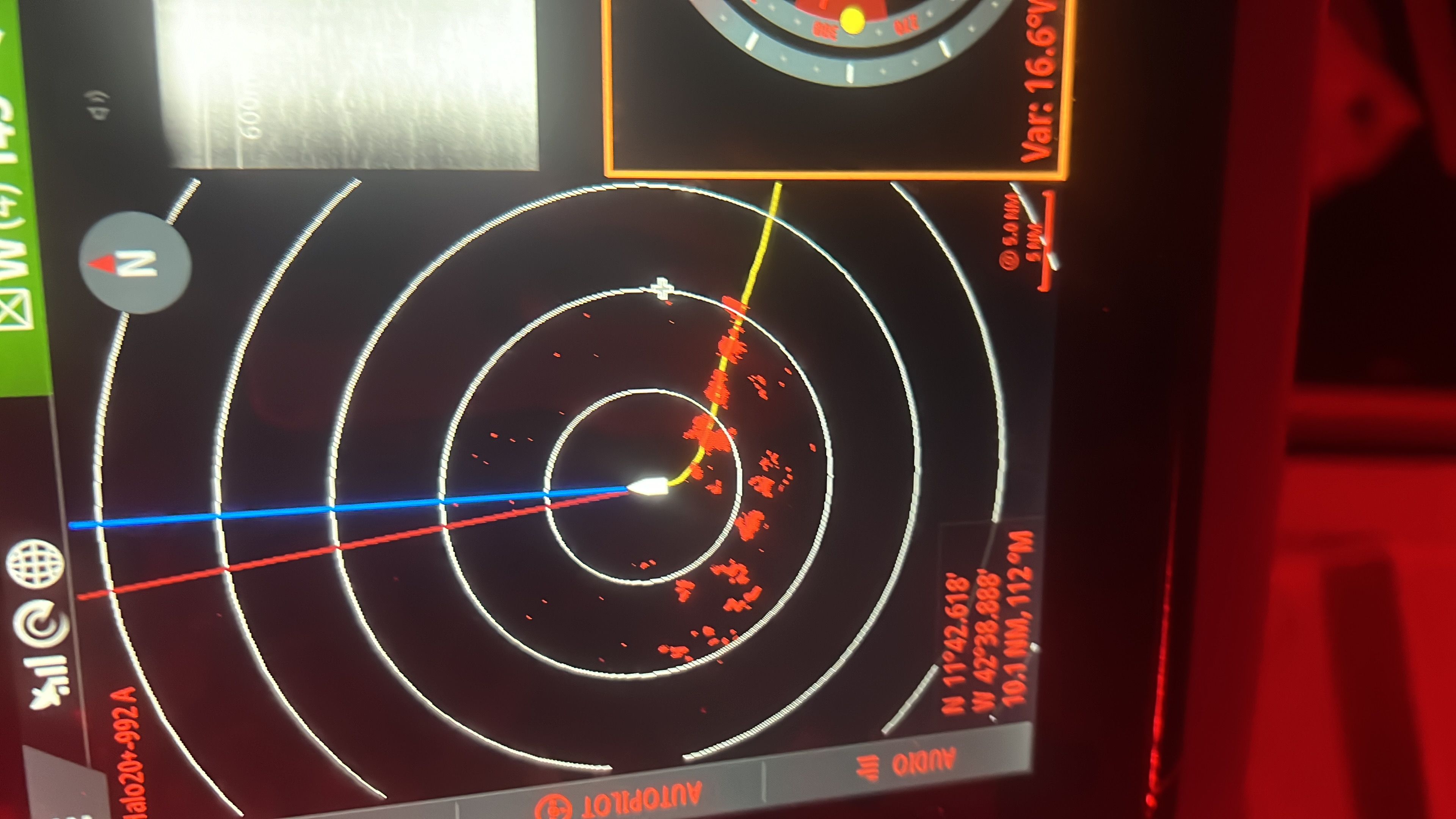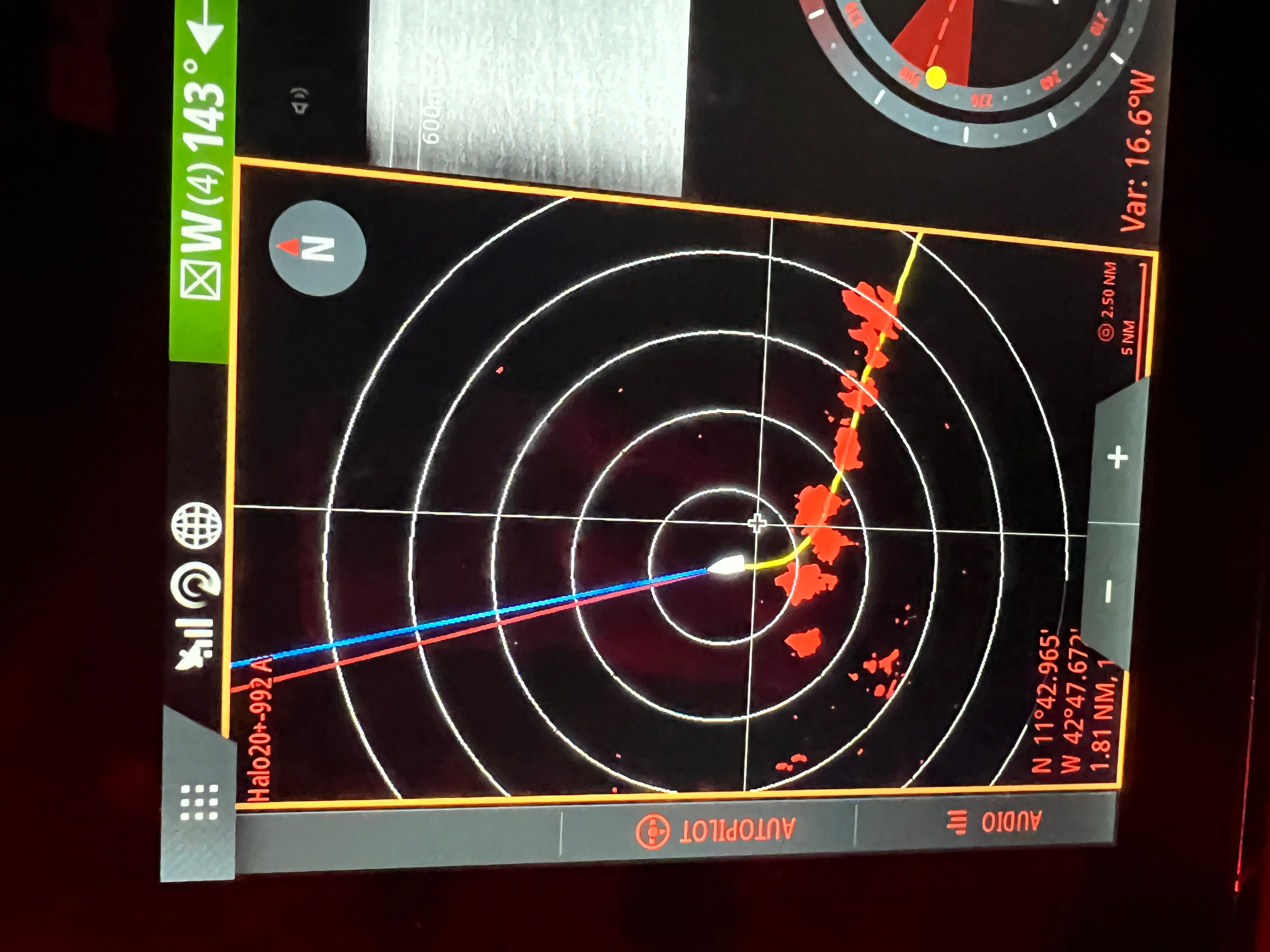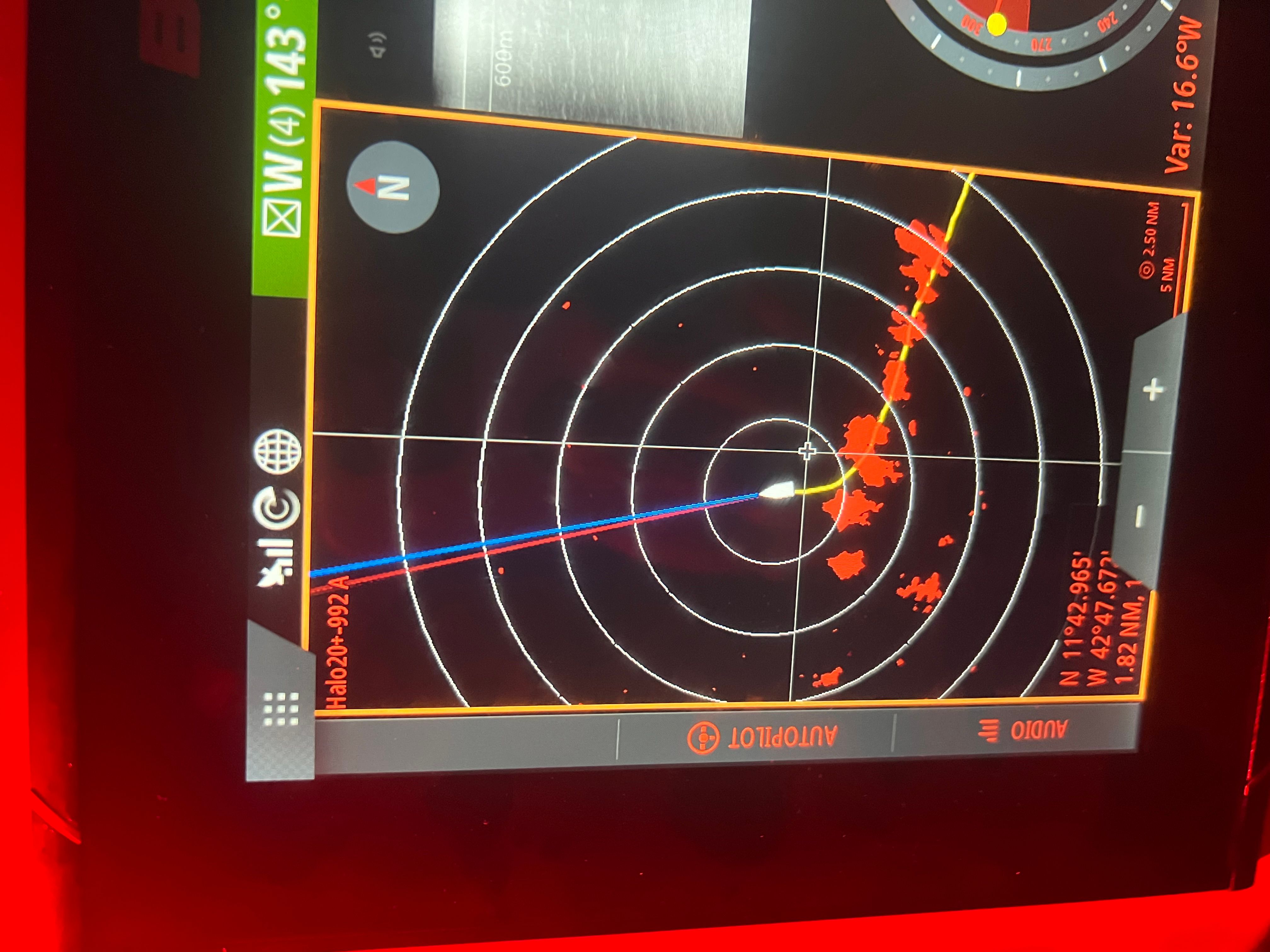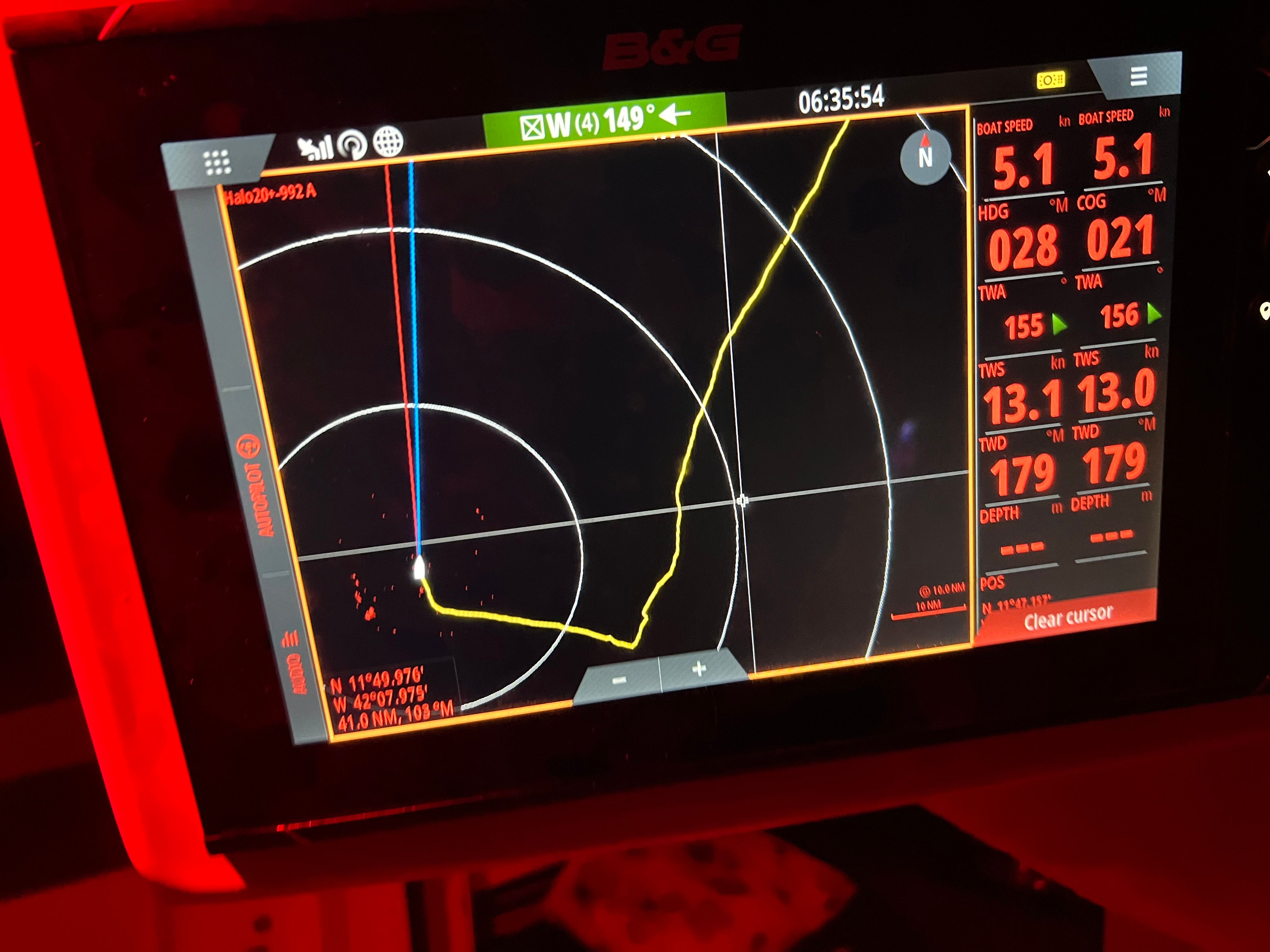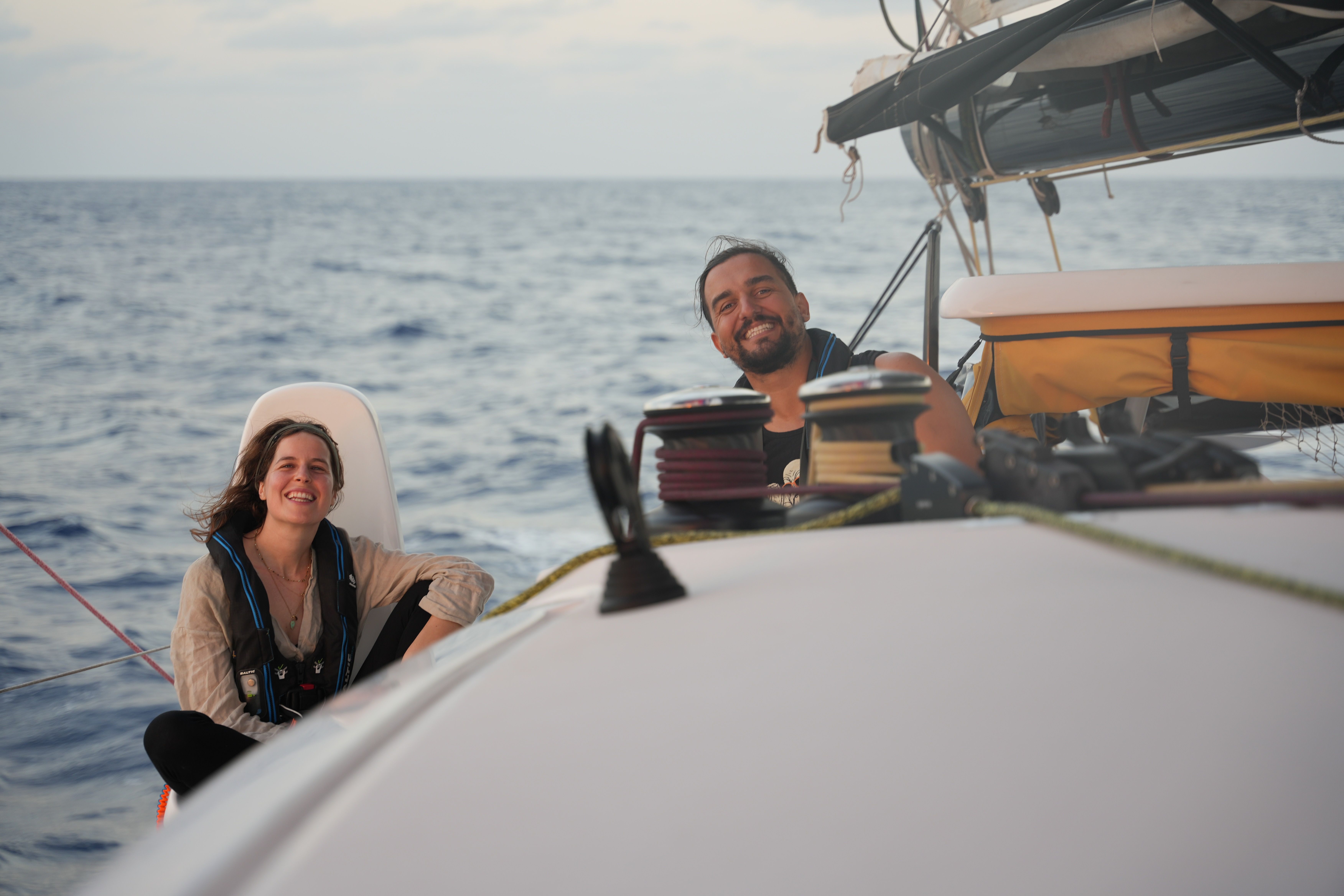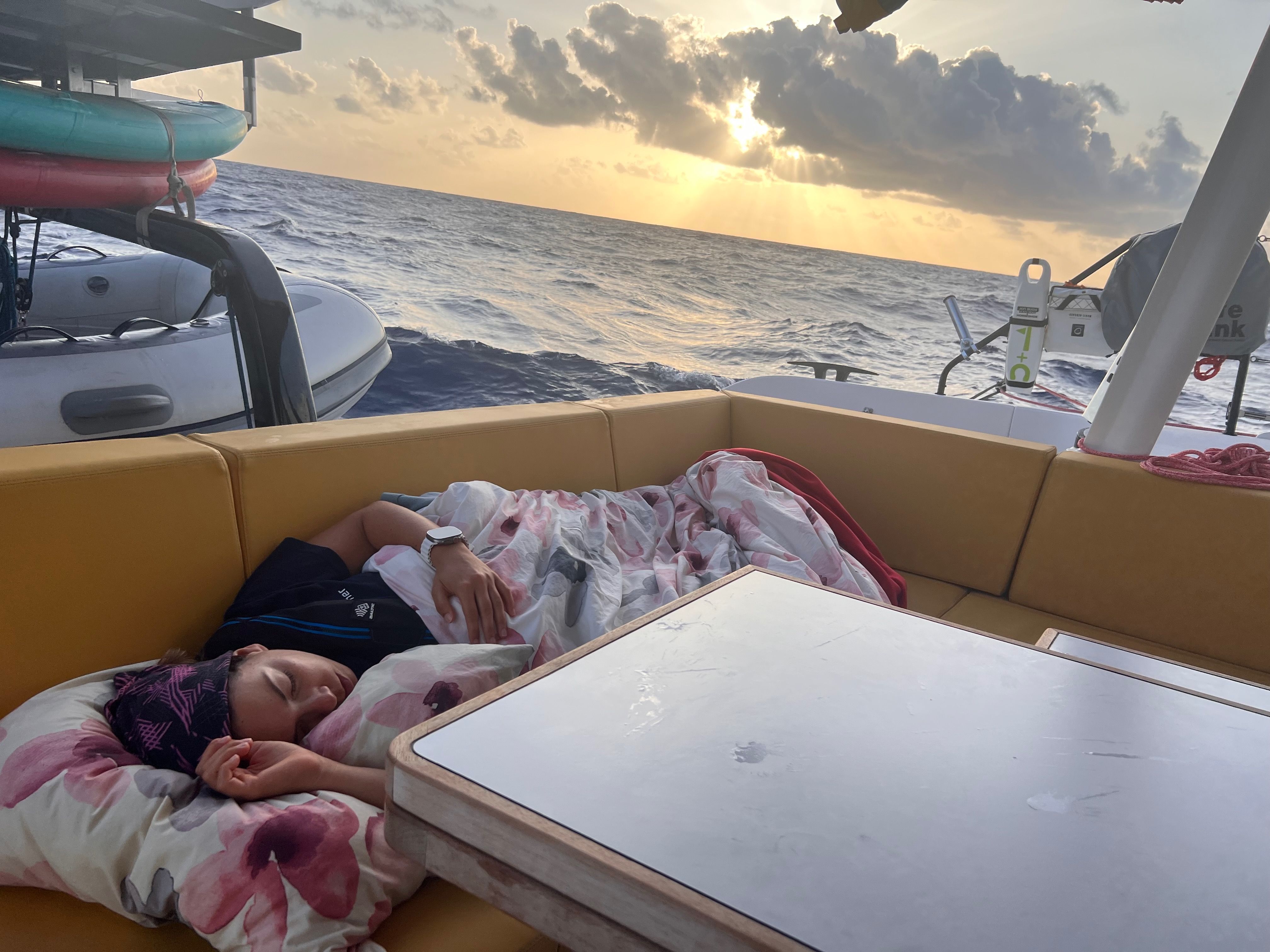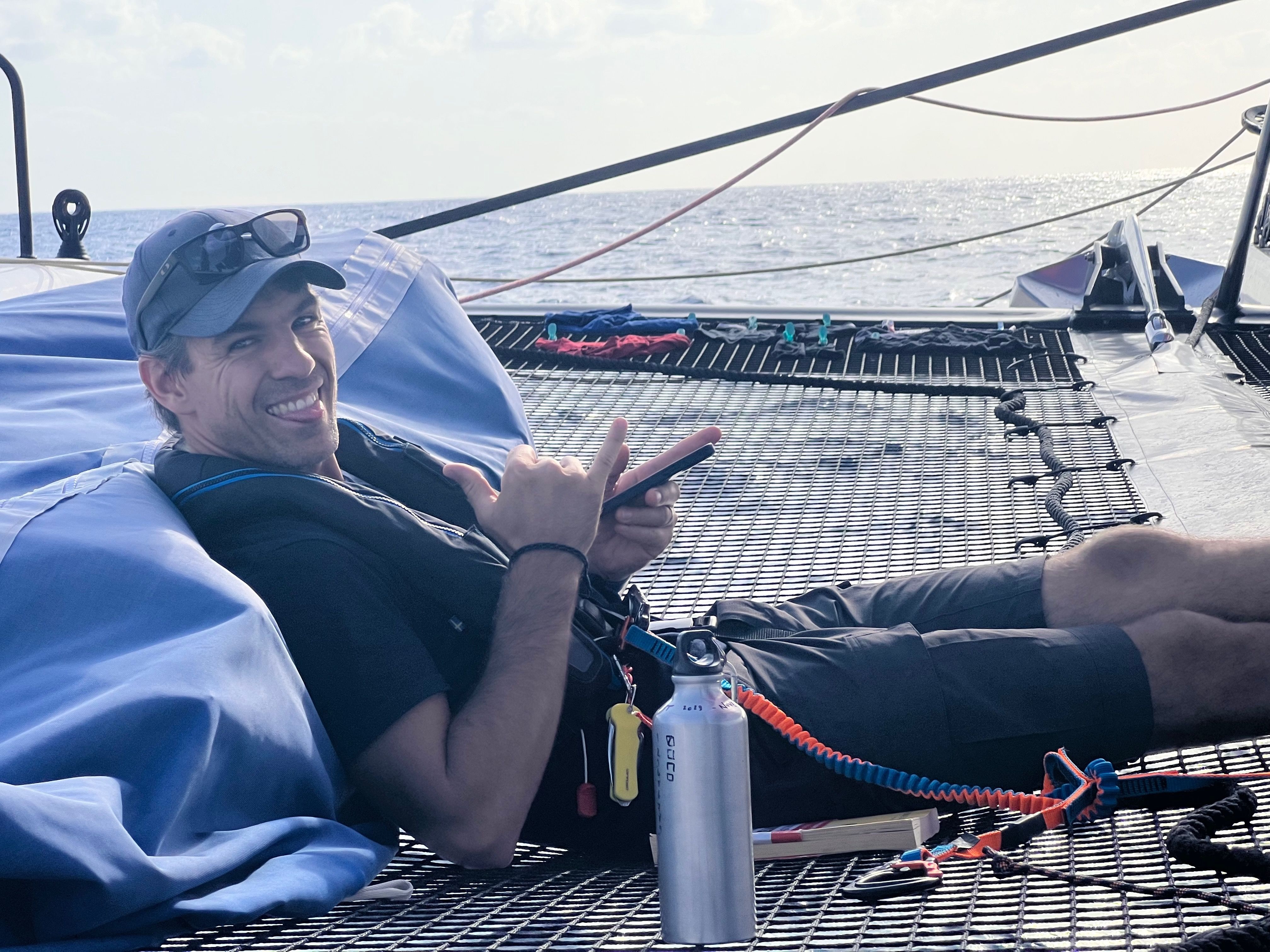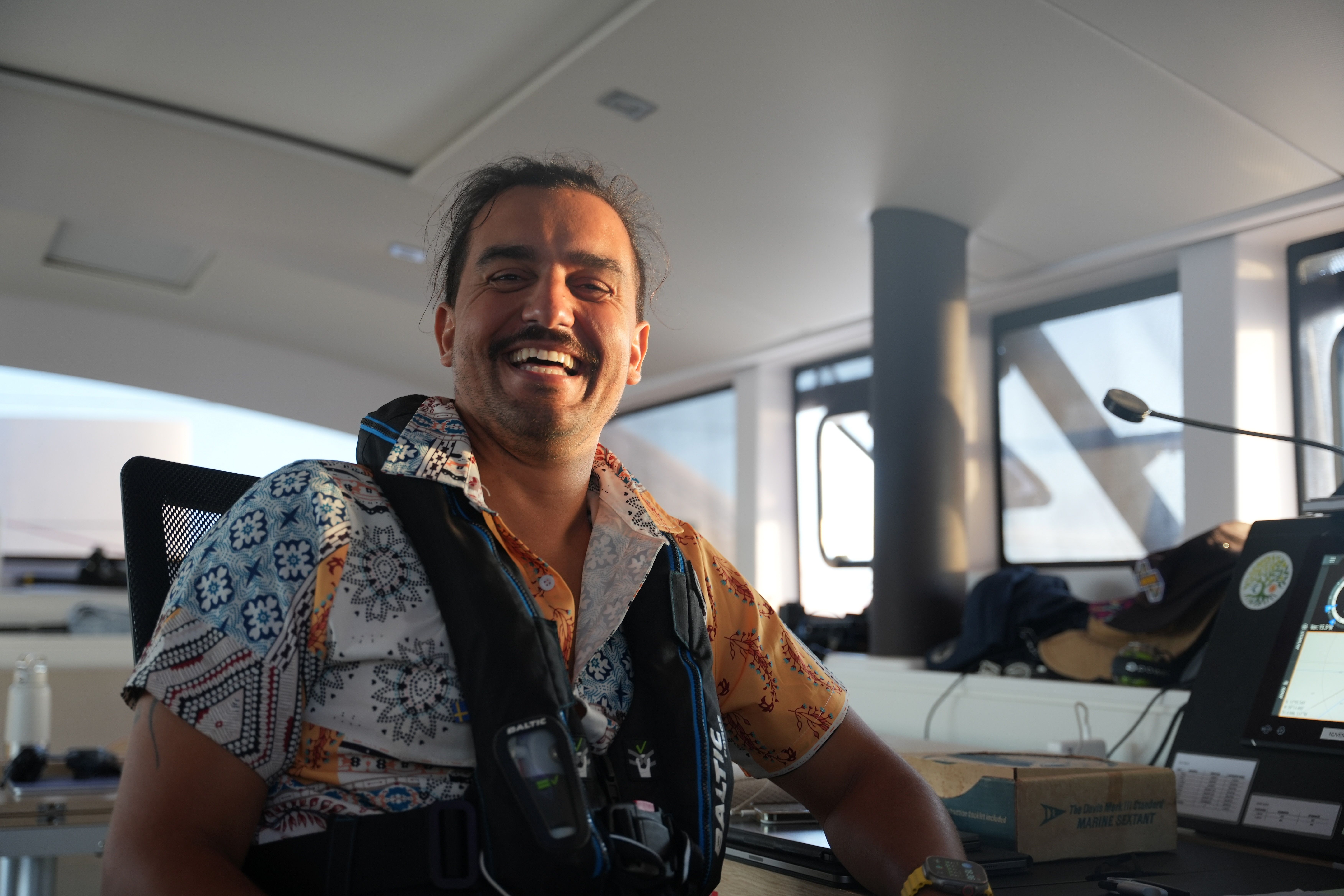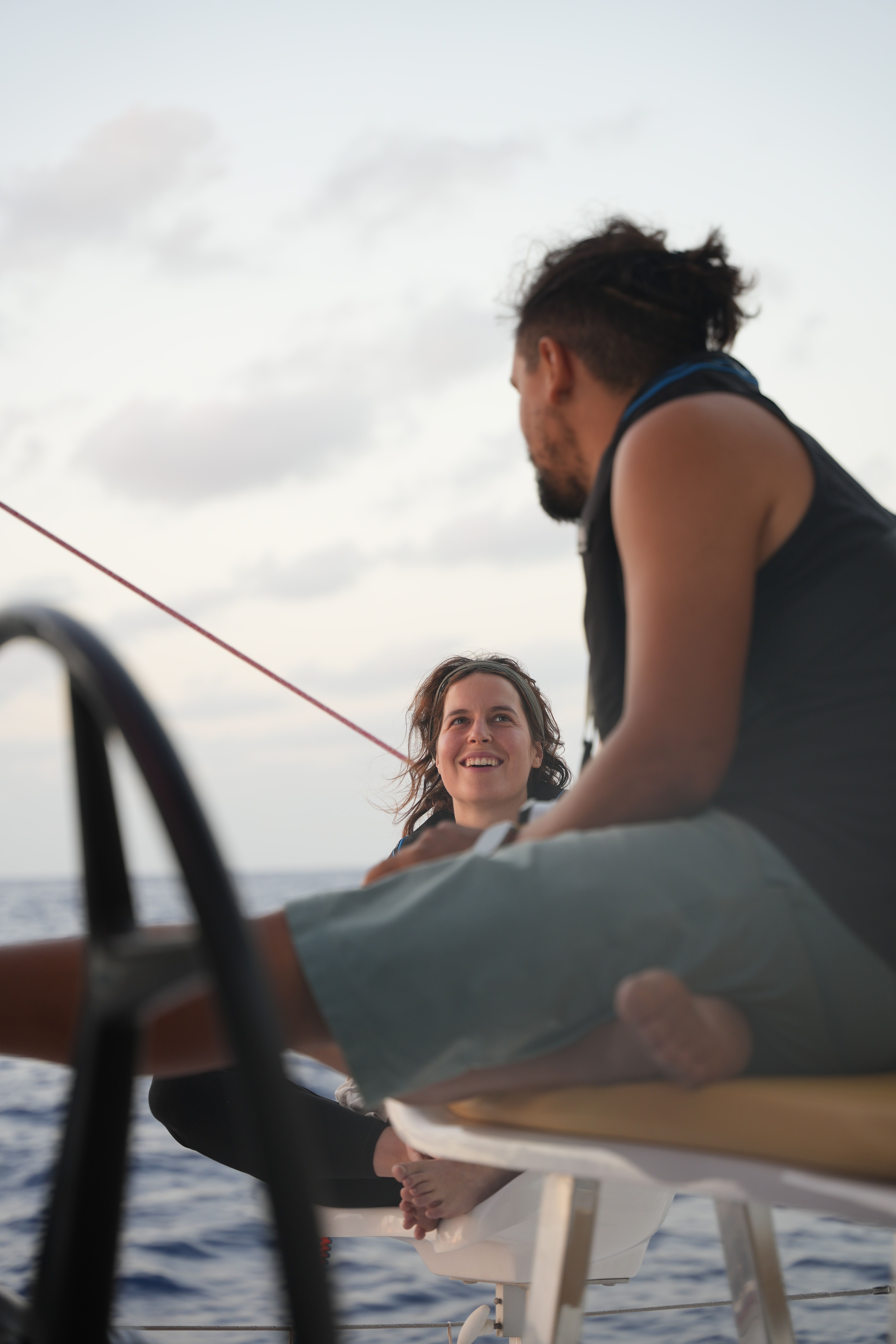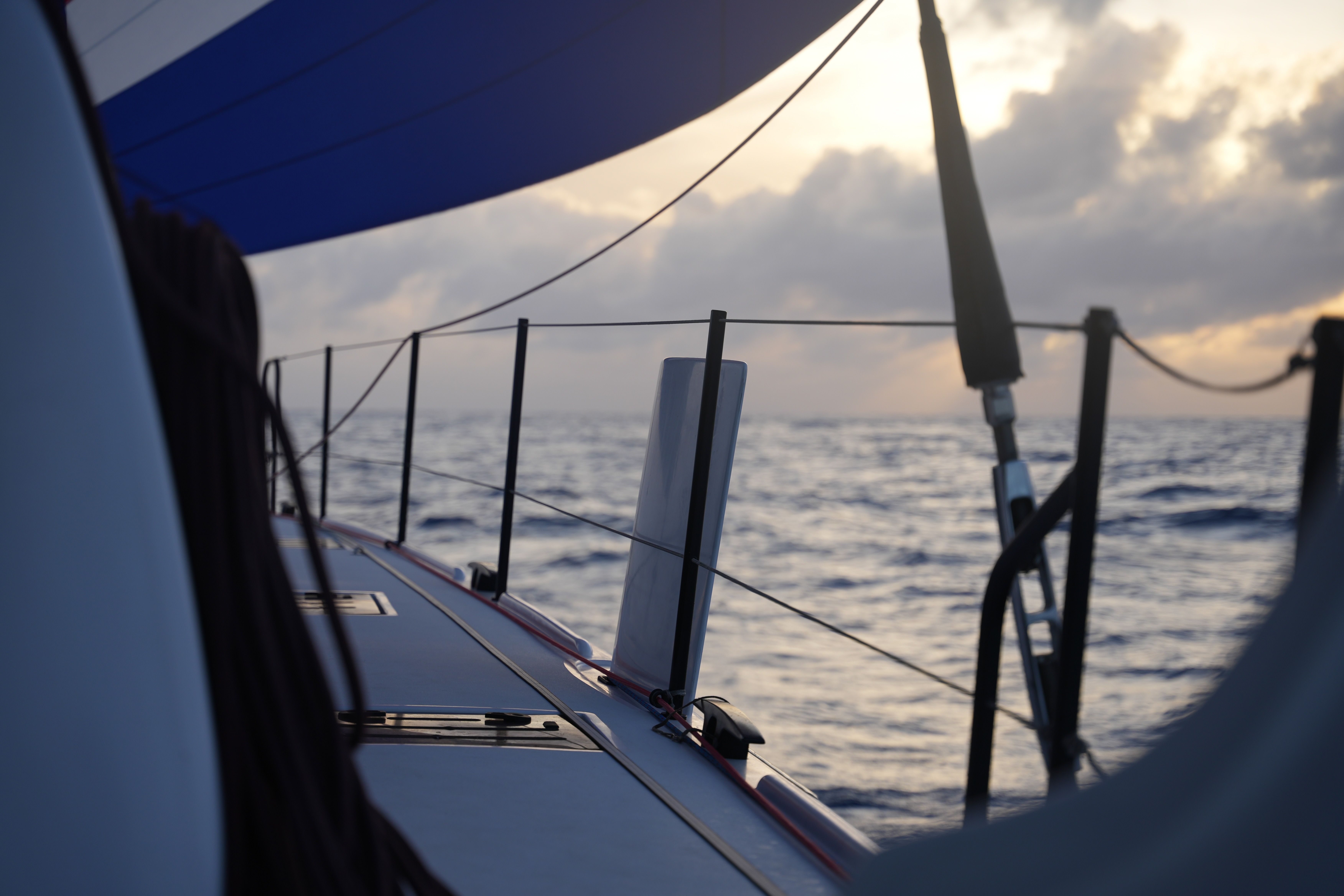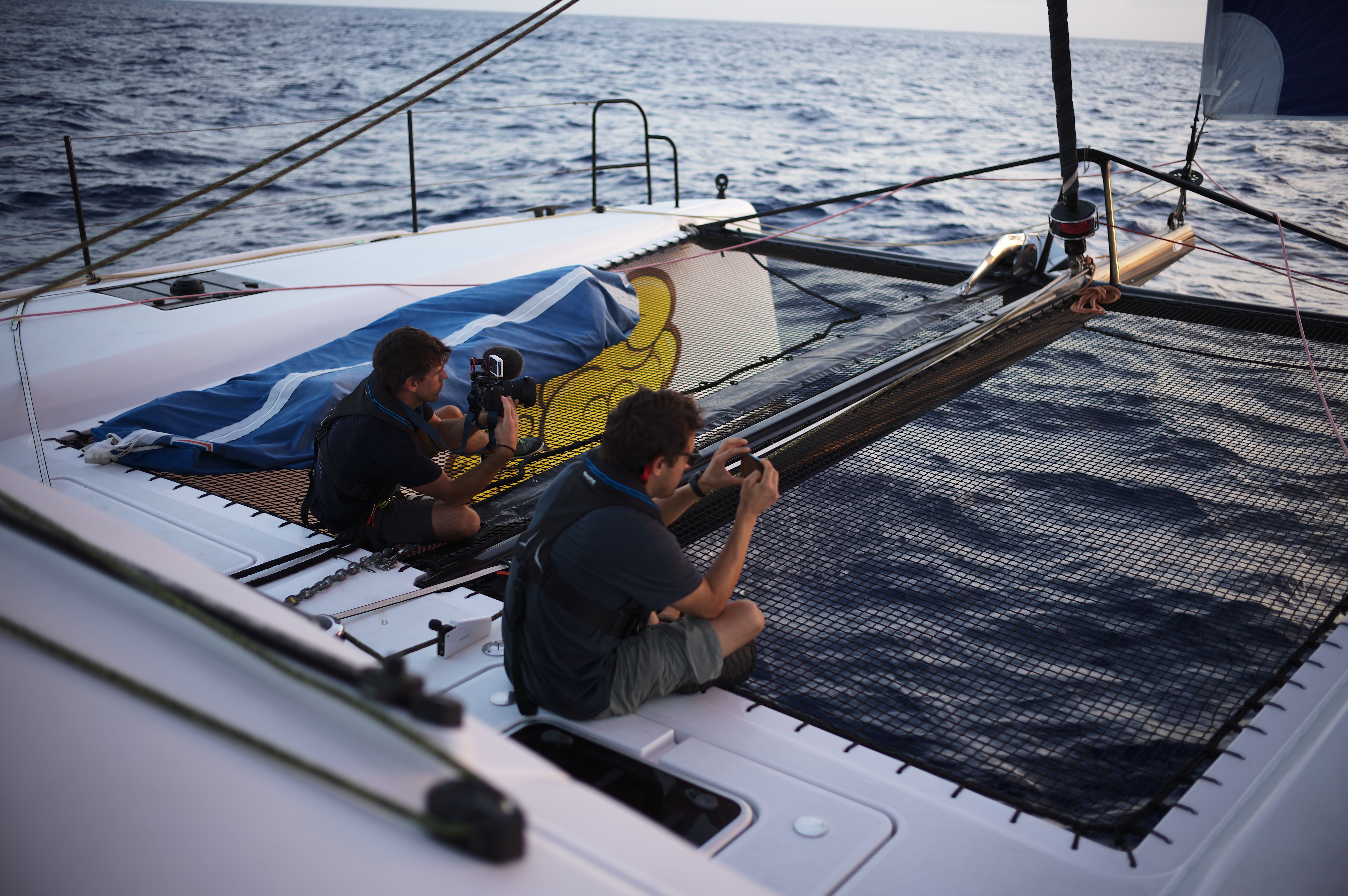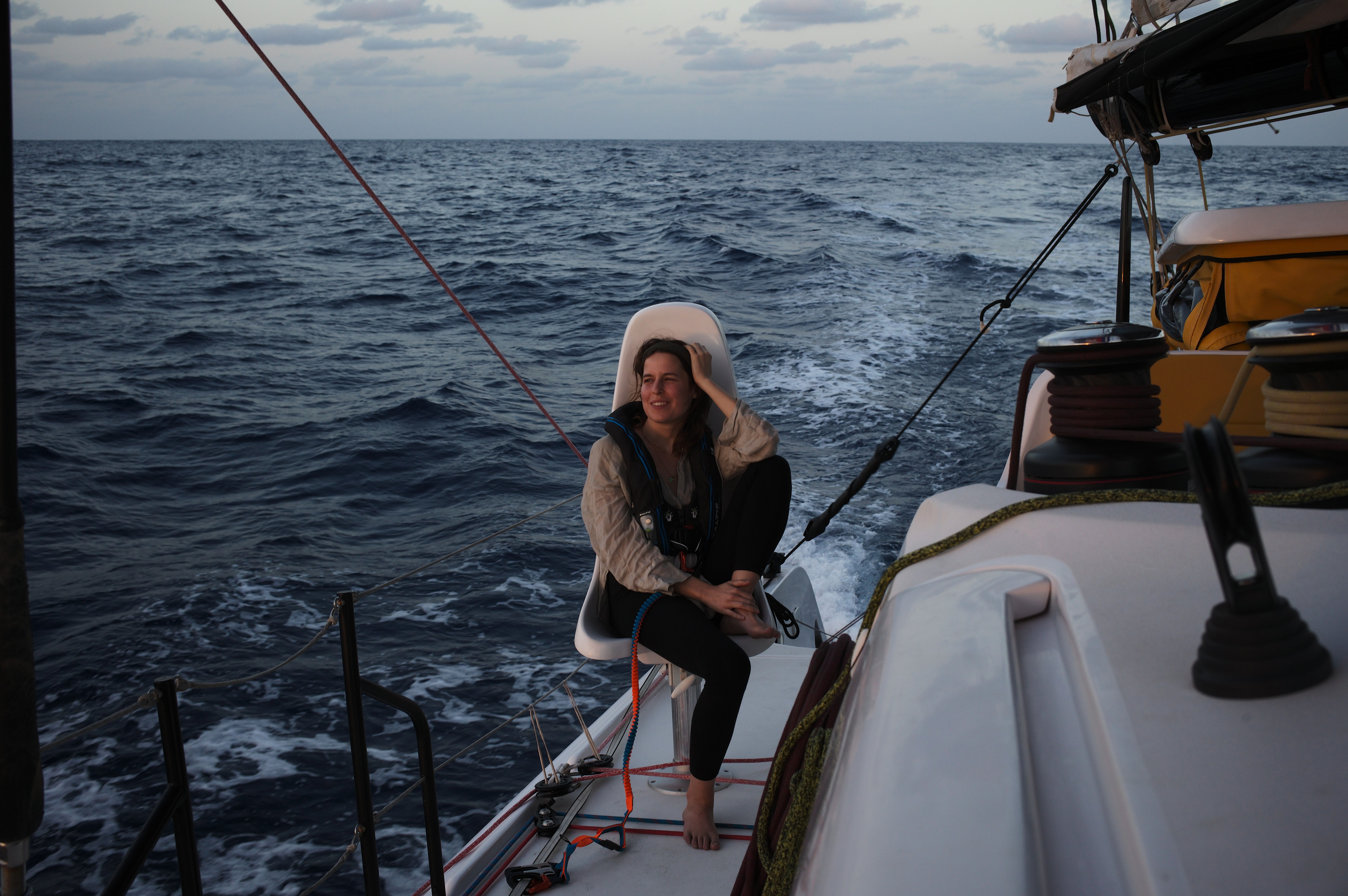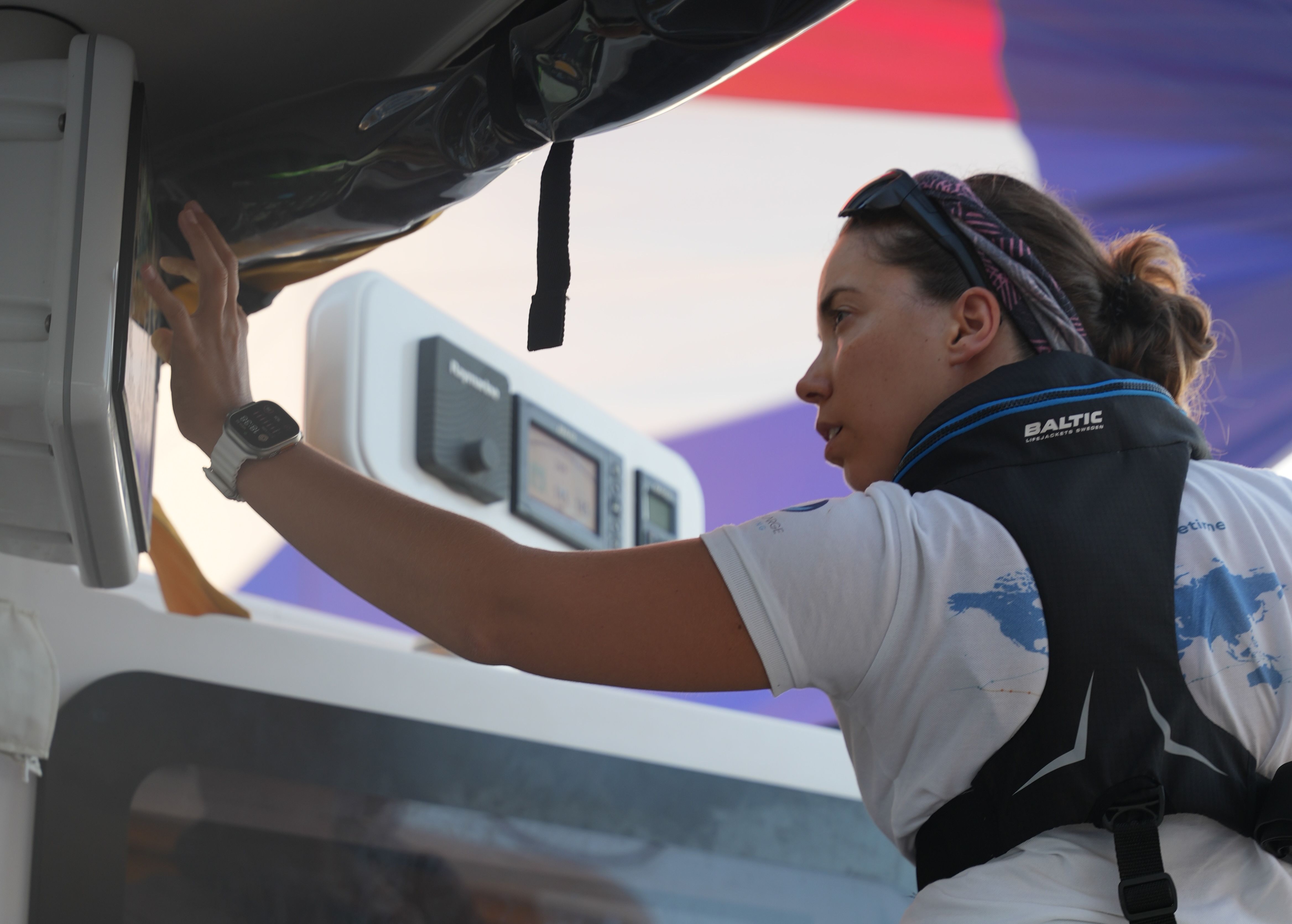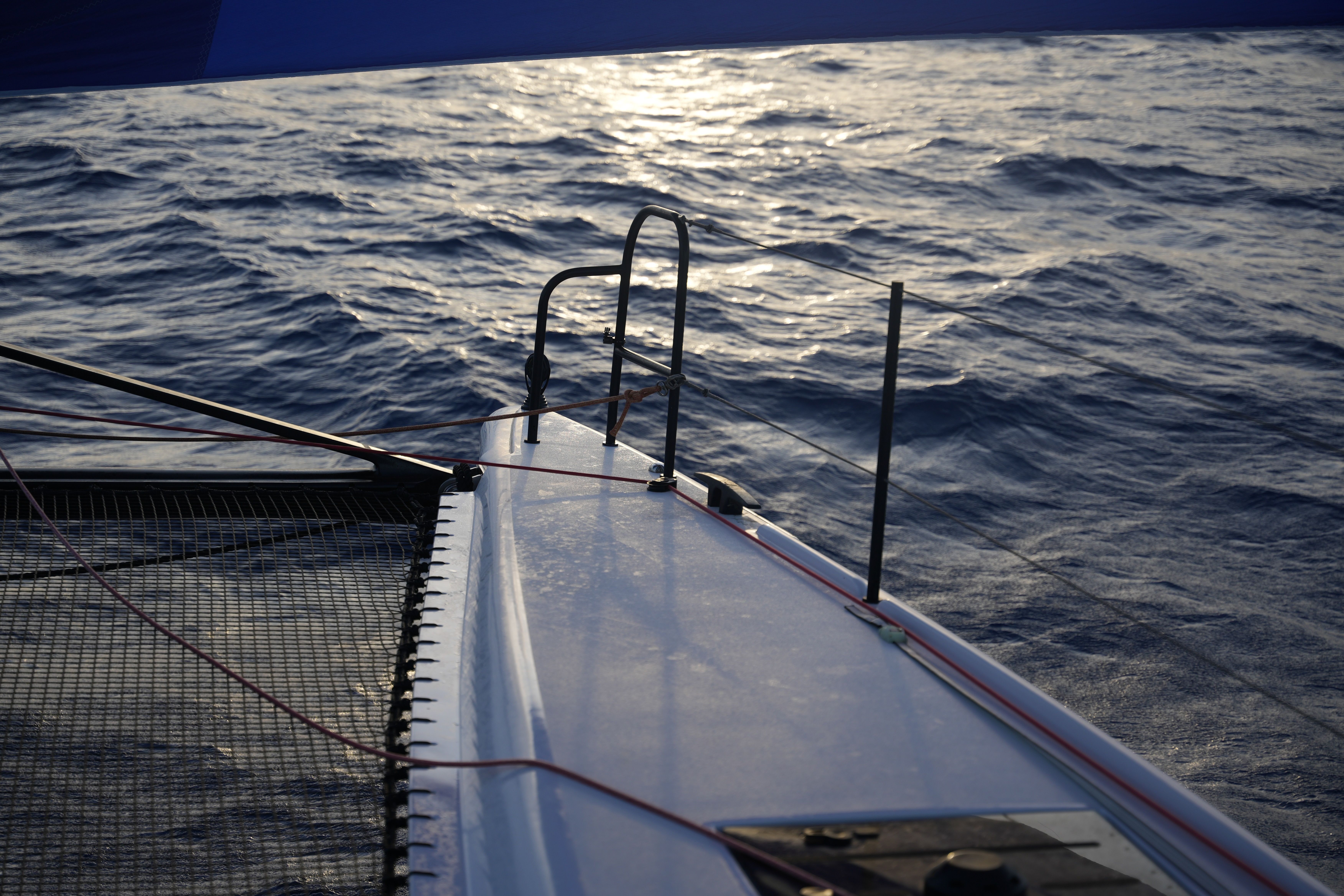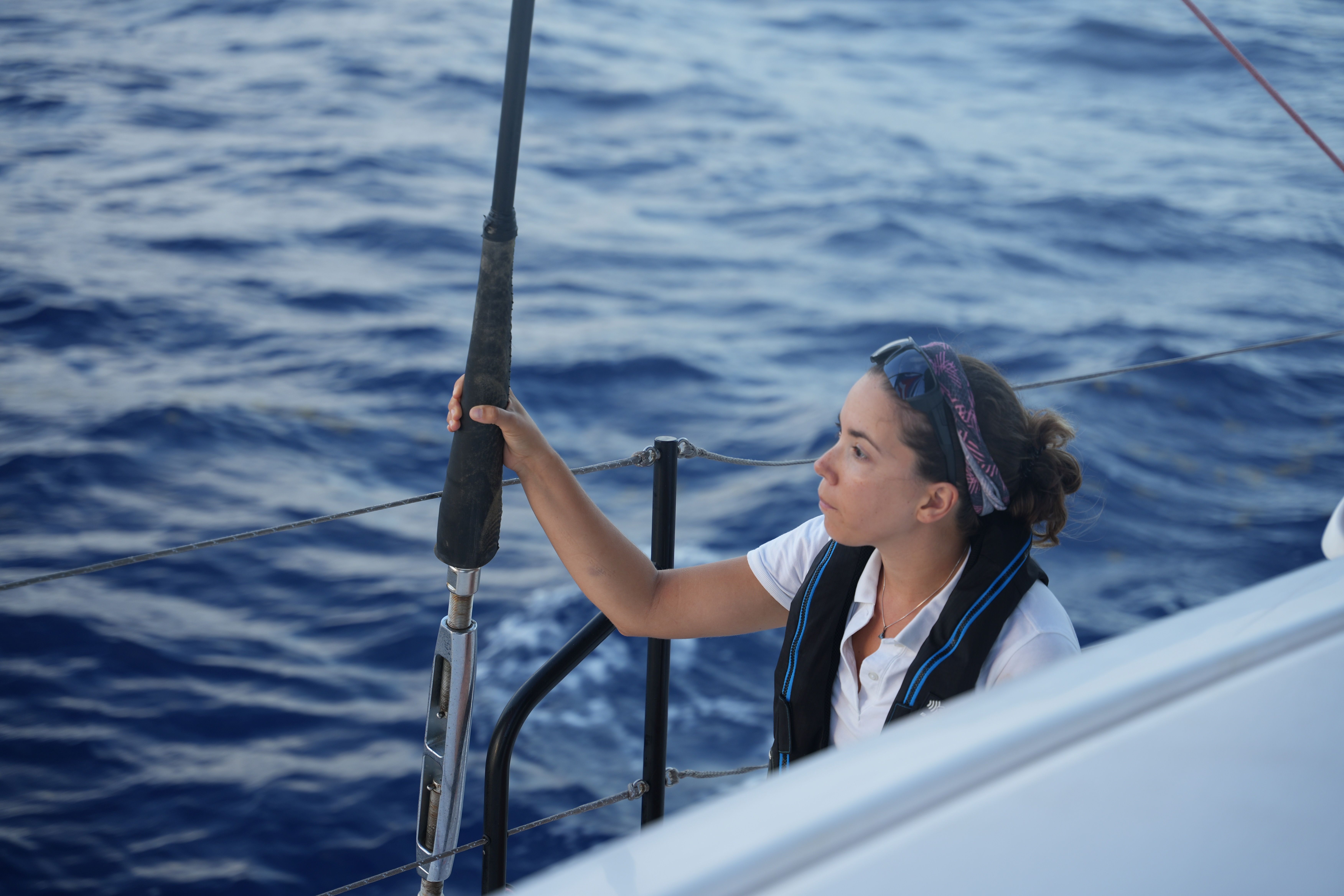Hello there sailor 👋
🙌 Defining sucess#
Leg 0 was fabulous. In Leg 1, we took a beating. Hm… how was leg 2 going to be?
One thing was clear to us by now: as first-time ocean crossers, our definition of success and what we wanted most was to arrive to the other side safely, with the boat in one piece. That is why we registered in the ARC+ 2023, a rally for cruisers (not a race).
This mindset trickled down to how the days were spent on Nuvem Mágica in the middle of the Atlantic Ocean.
👯 Enjoying a safe ocean passage together#
We weren’t racing. We had some fun sessions hand-steering, trimming the sails to perfection, making small experiments… but, for the most part, we were happy to have A.P. on board, the tireless crew member called auto-pilot!
There was the occasional mild sea sickness but, othwerwise (and healthwise) everything went well!
Folks would, for the most part, spend their time discussing, reading, playing music, playing the occasional video game, taking pictures, writing… and more!
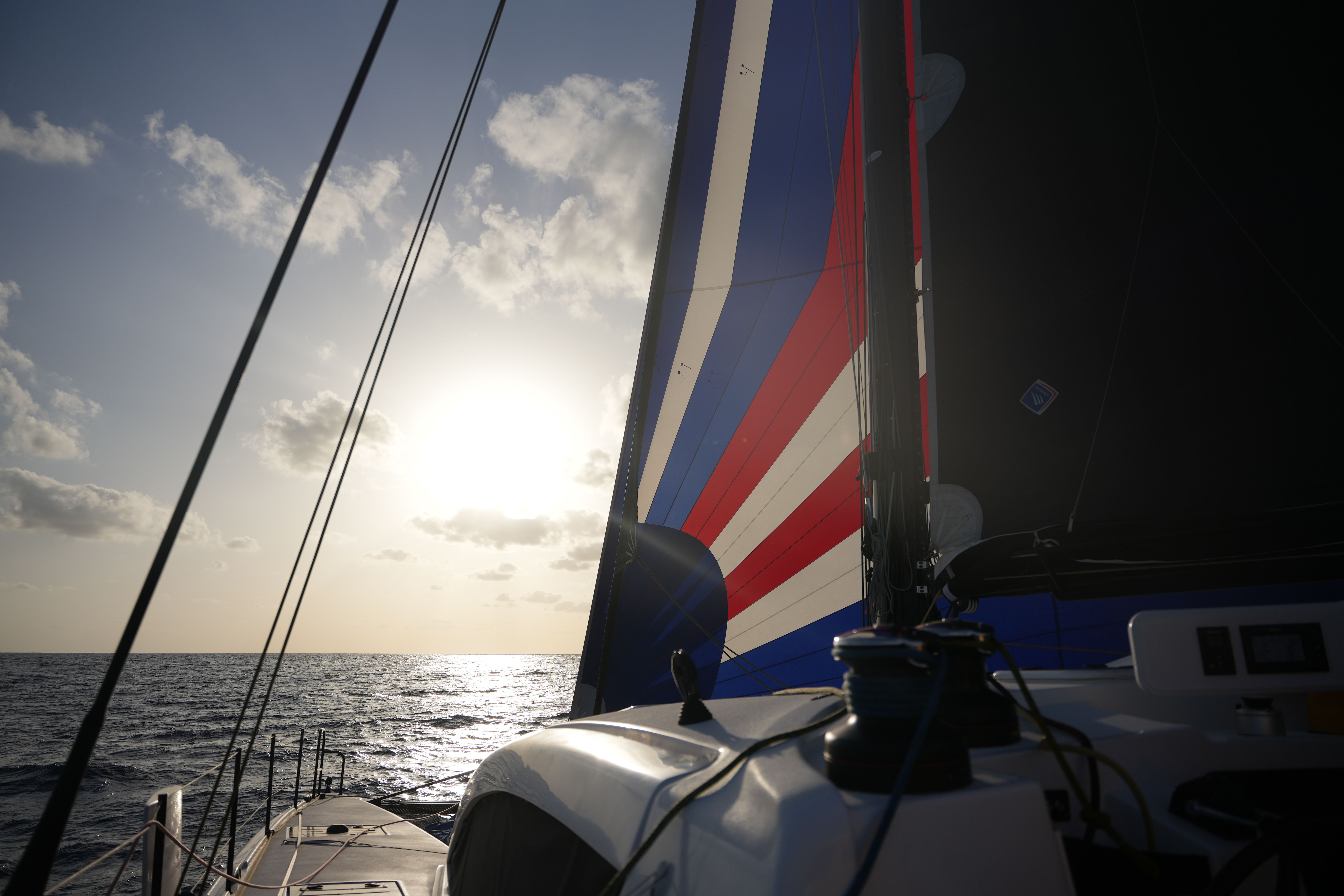



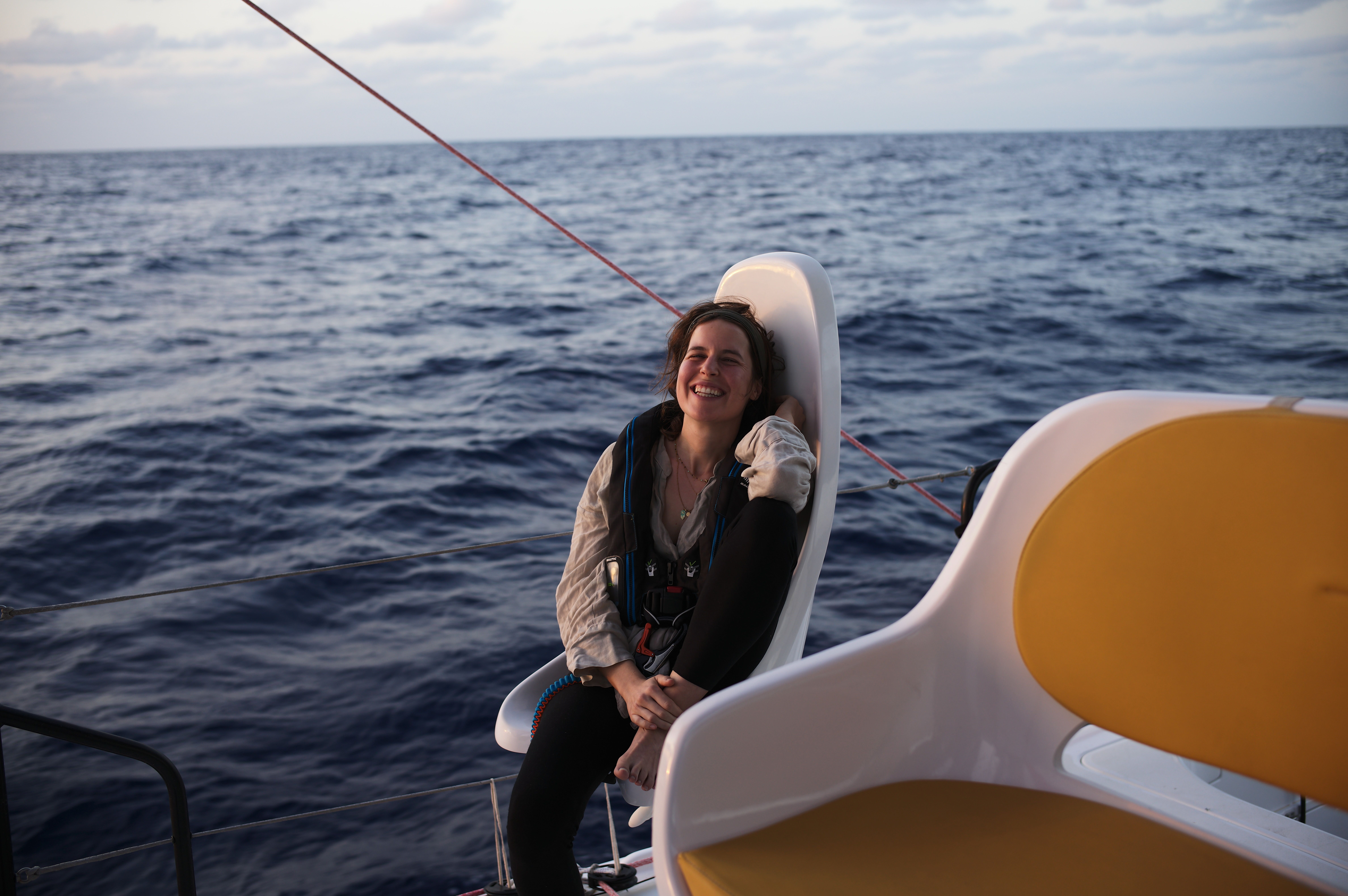

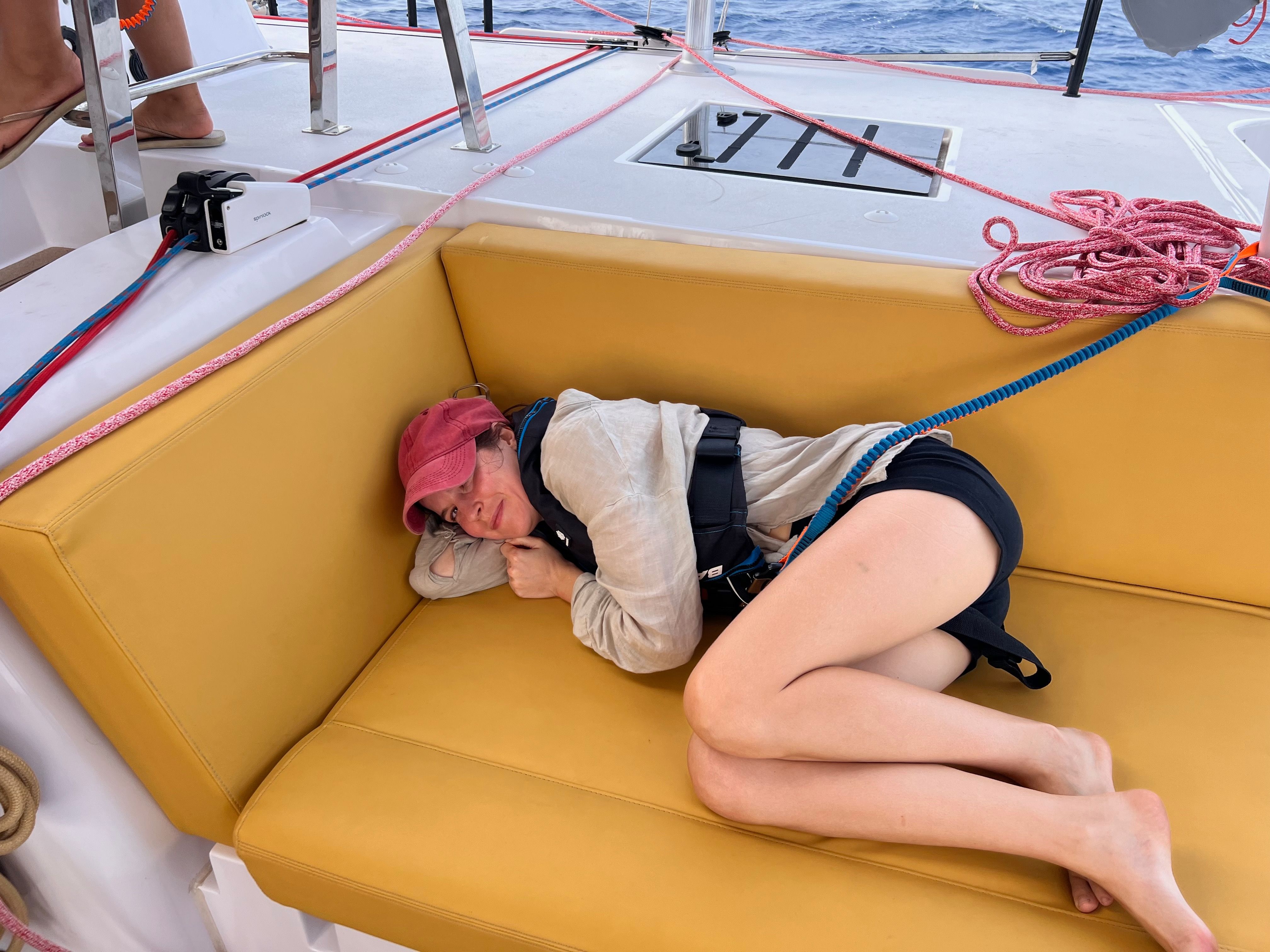


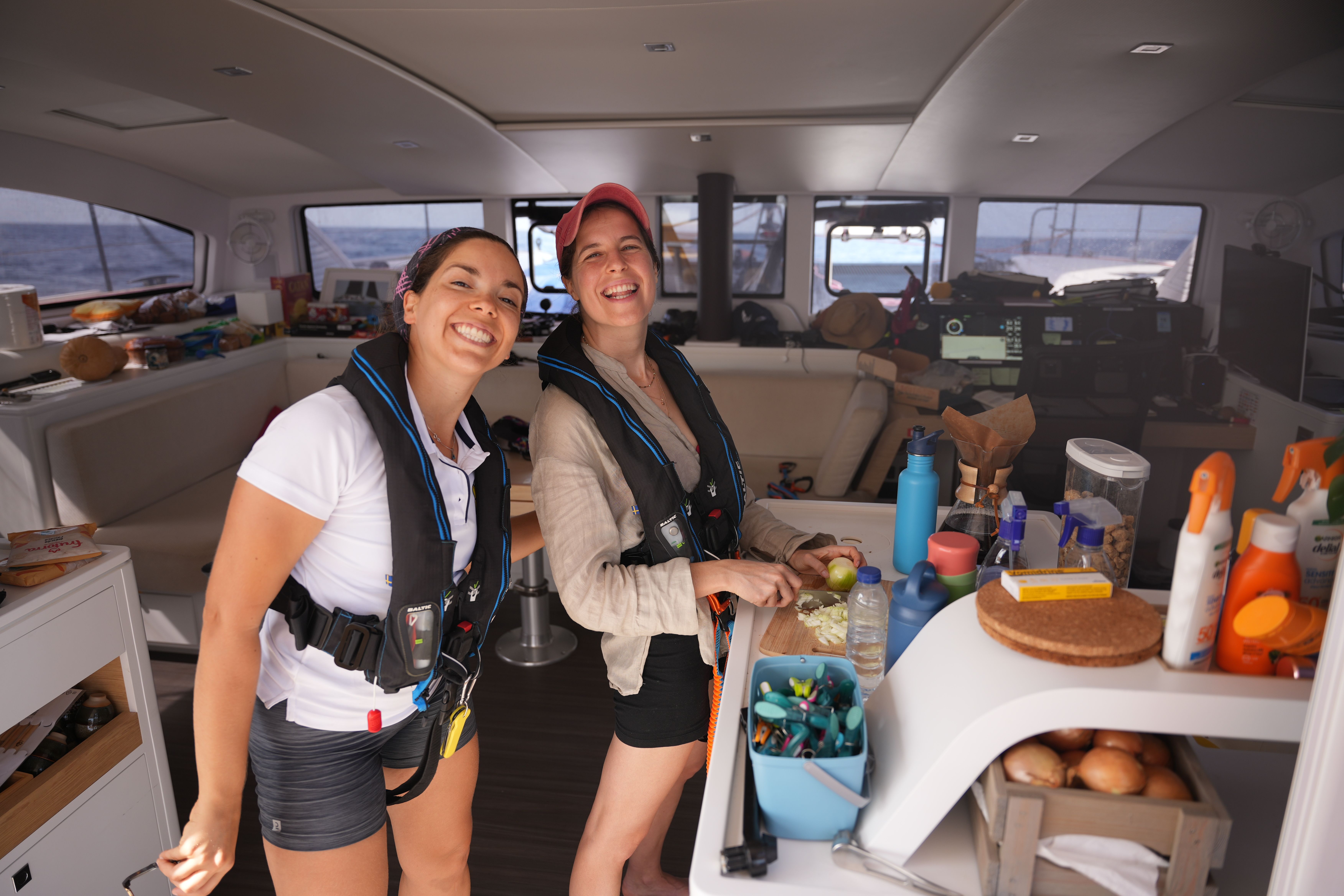
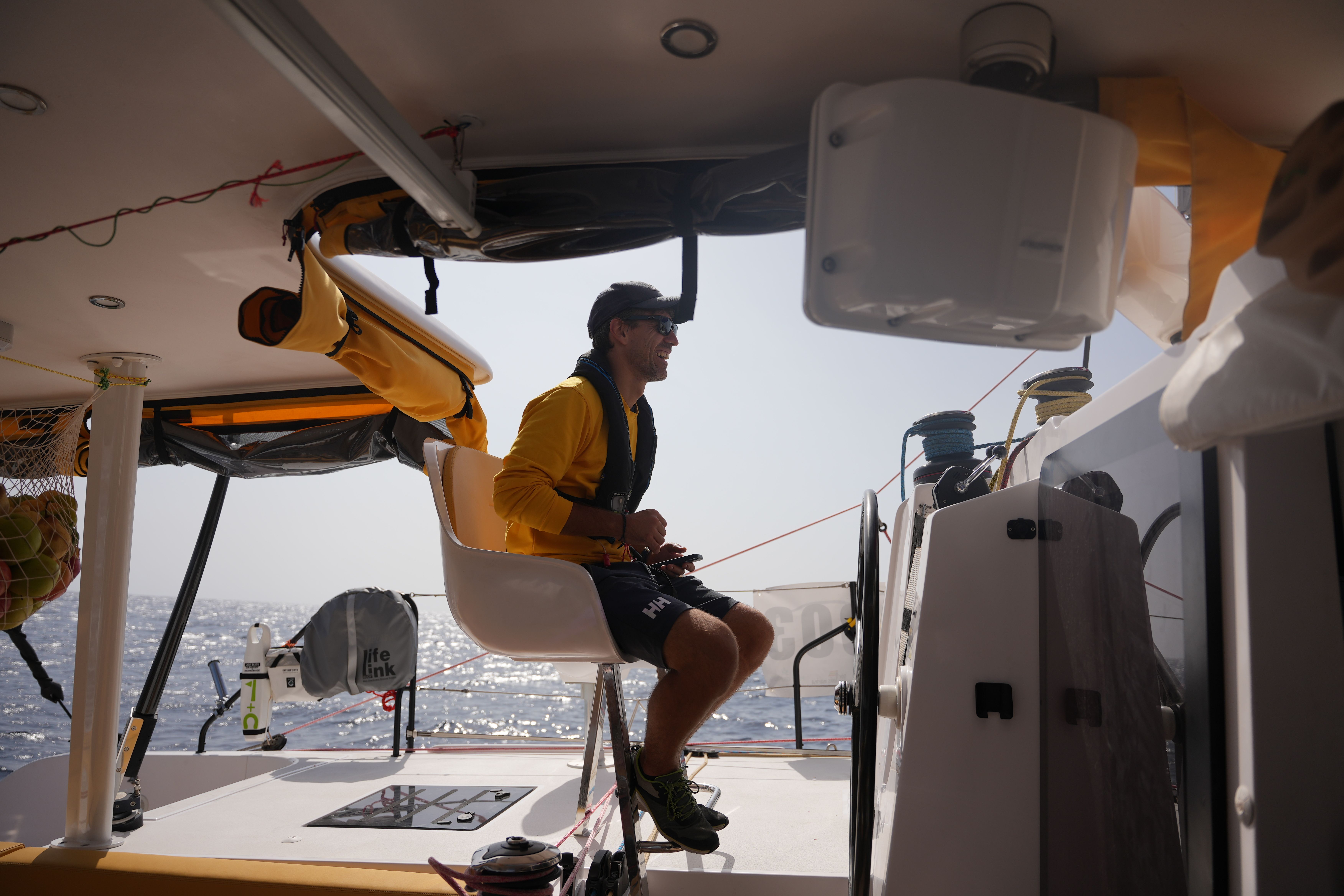

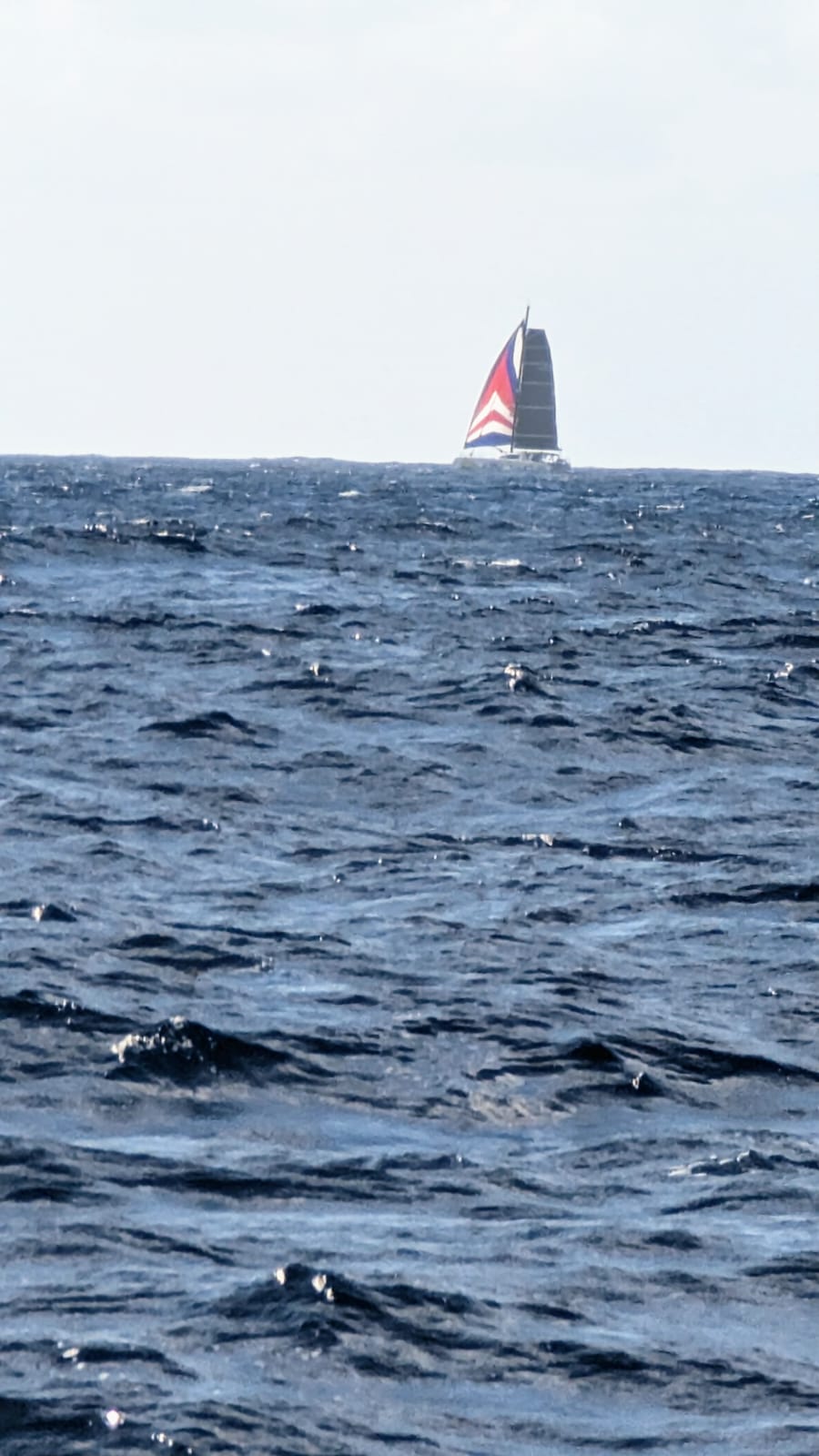
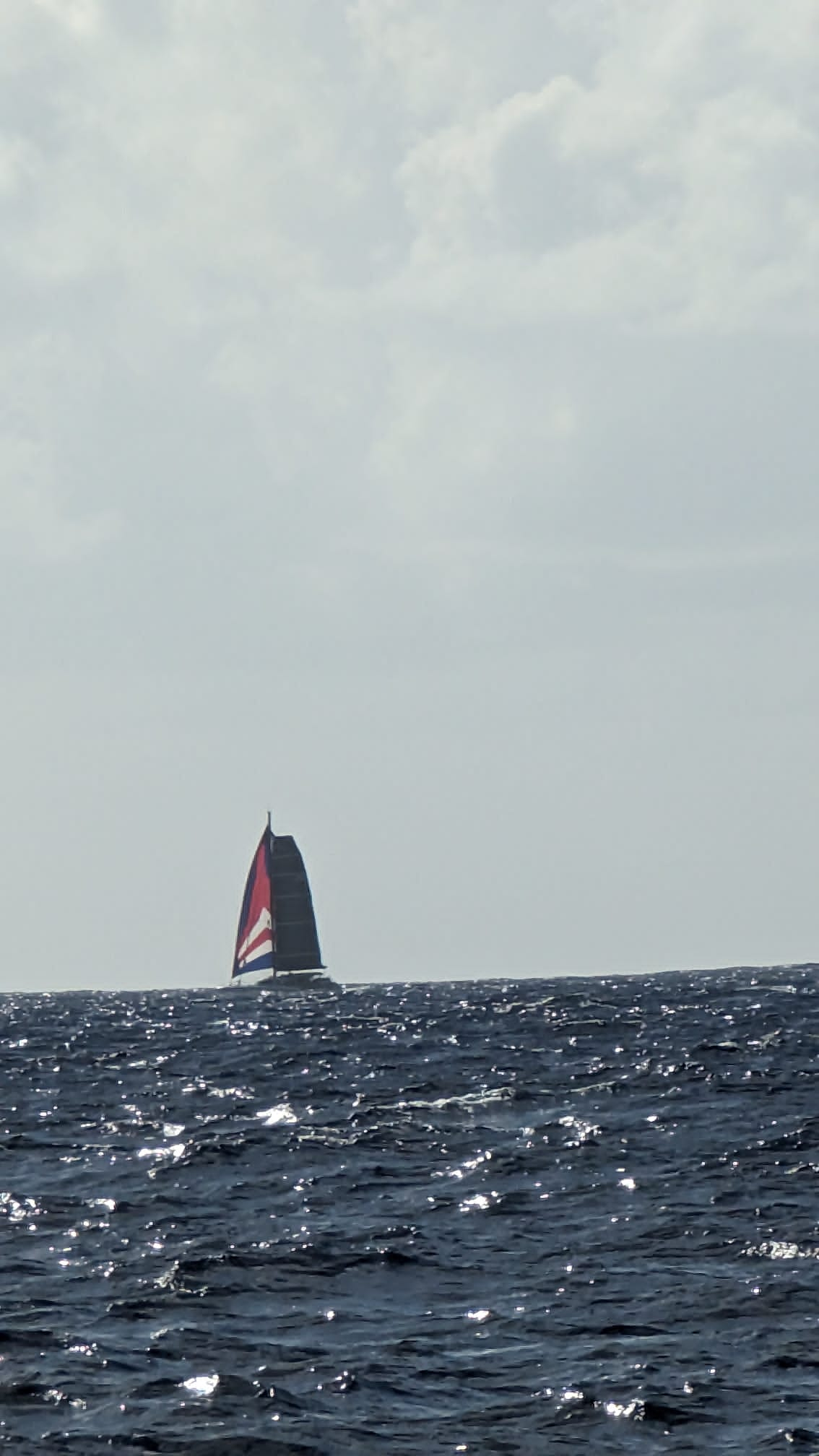
🥘 Galley Chefs#
The food was definitely a highlight of the trip. We had provisioned quite extensively, and had a lot of variety on board. Here are some of the recipes we made:
- Chili sin carne (con soja)
- Tacos
- Sweet potato and vegetable stew with almonds
- Roast pork tenderloin
- Chinese noodles
- Meat stew
- Oven salmon
- Bacalhau no forno (that is, oven-cooked cod): this particular meal felt like an anticipated Portuguese Christmas… but in the middle of the ocean 🎄🌊
- Fresh bread (white bread and bread with nuts and raisins 😋)
- Bruschettas
- Hummus (loooots of hummus)
- French toast
- Brigadeiros (a brazilian sweet)
- Papaya ice cream (boat made and with fresh papaya! Once with coconut milk, once with greek yoghurt)
- (Arrival) pancakes
- and so much more…
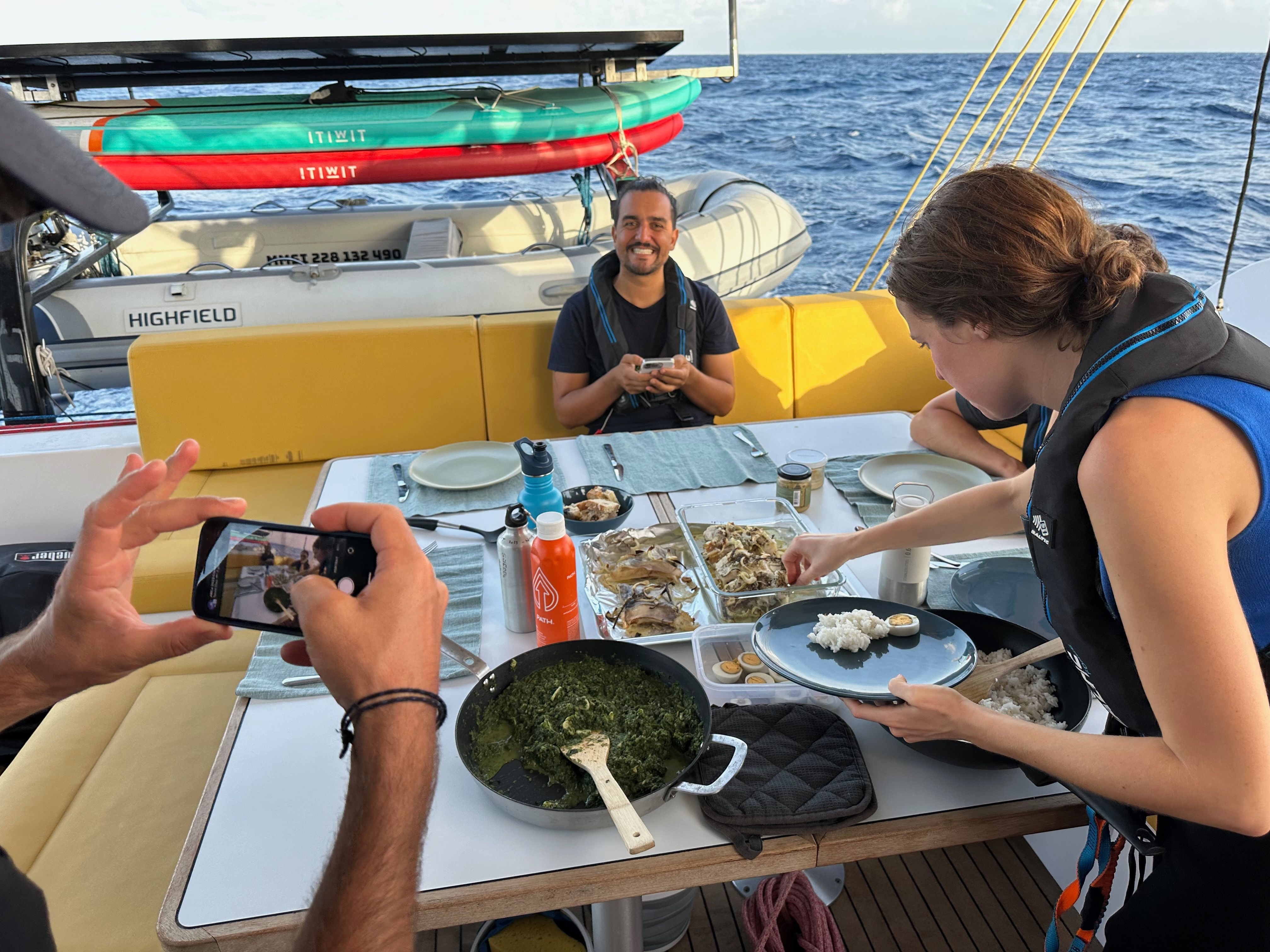
Take this and the need to eat regularly during a passage… and some of us felt like they had put on some weight when arriving to the other side of the Atlantic 😉
🏋🏽♀️ Pump it#
As we took to eating well and plenty, staying active became an important part of our routine. We tried to to workouts fairly regularly. For each workout, one person would define the circuit and exercises, and we would do multiple rounds of the circuit.
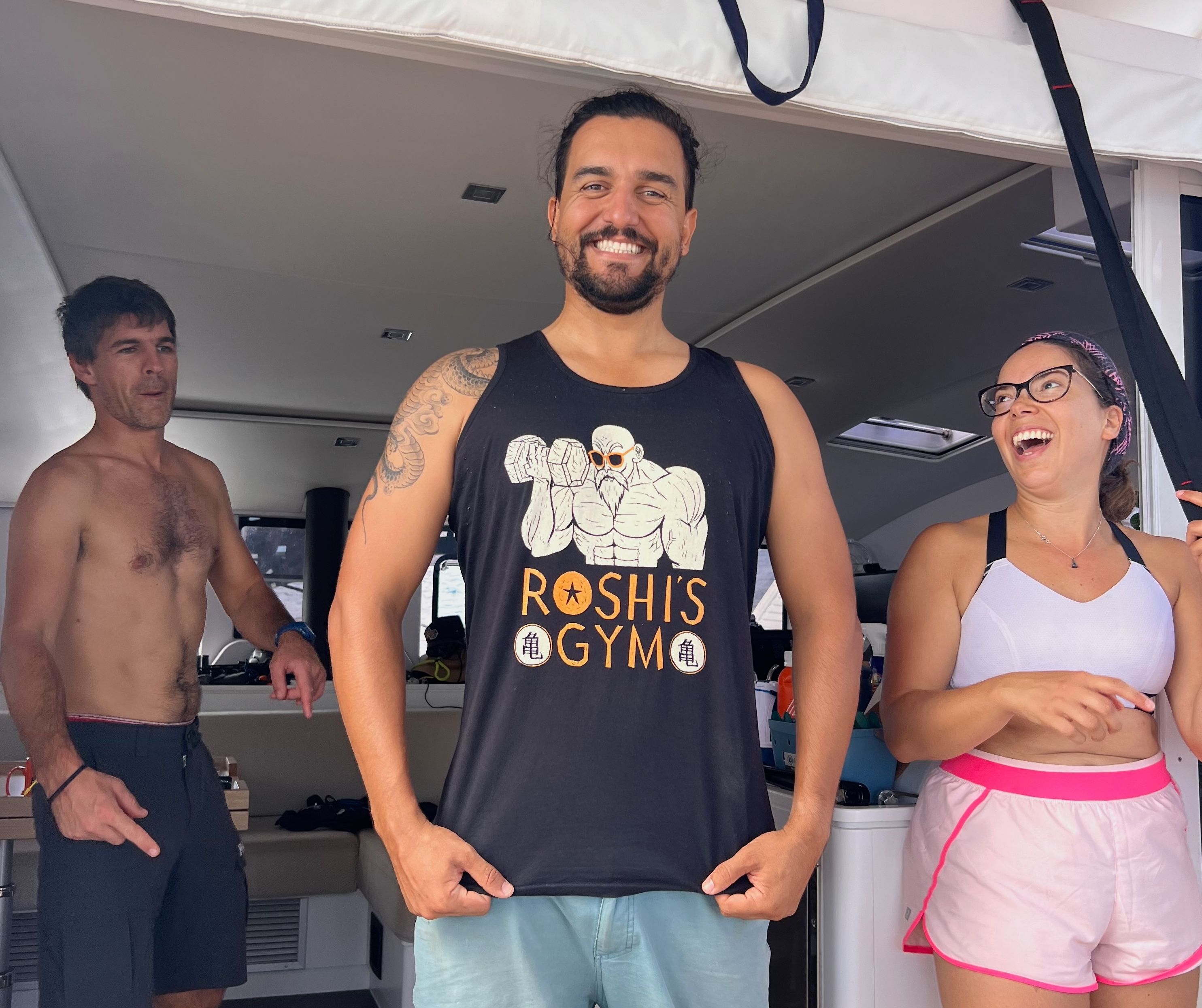
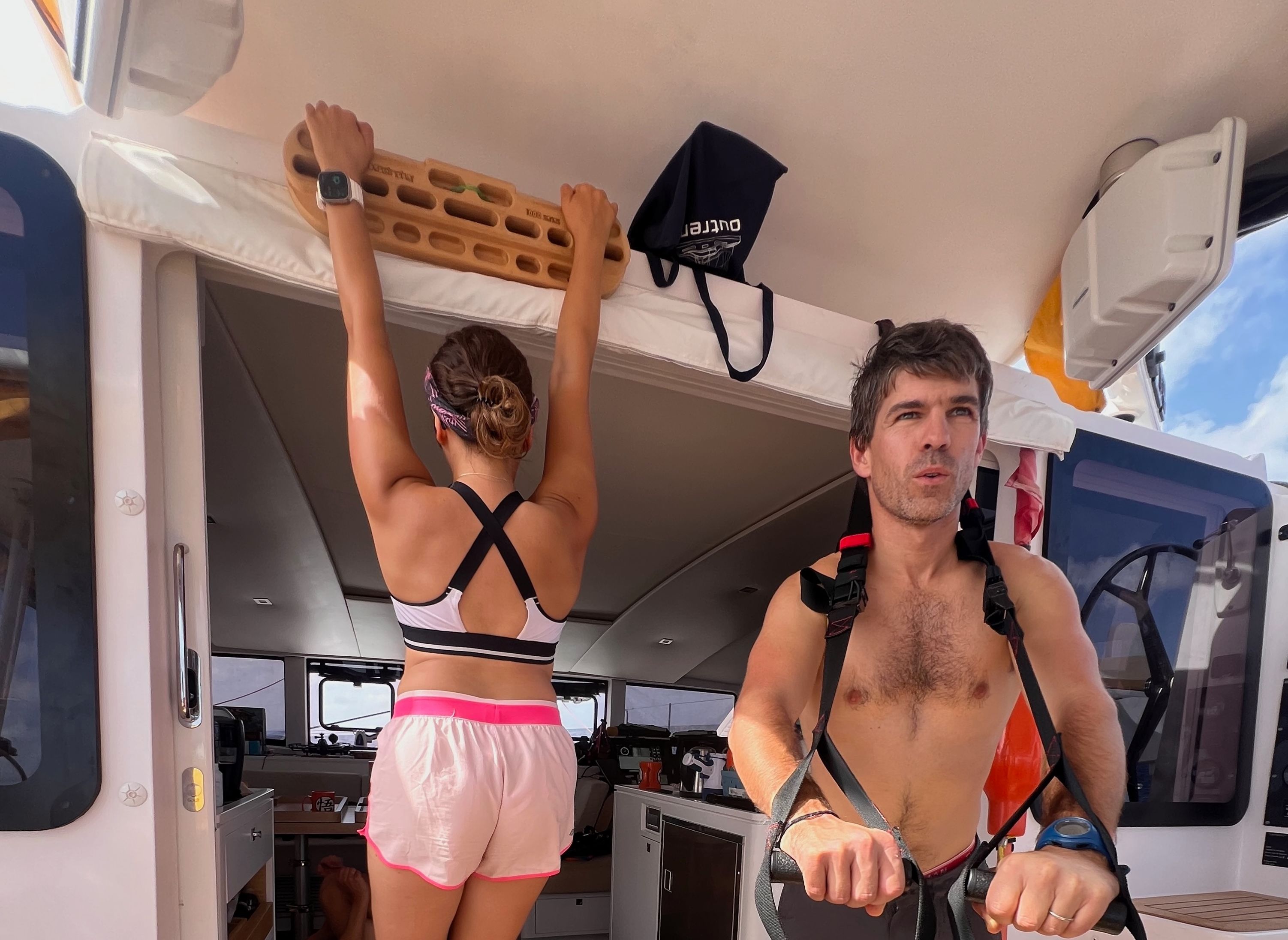
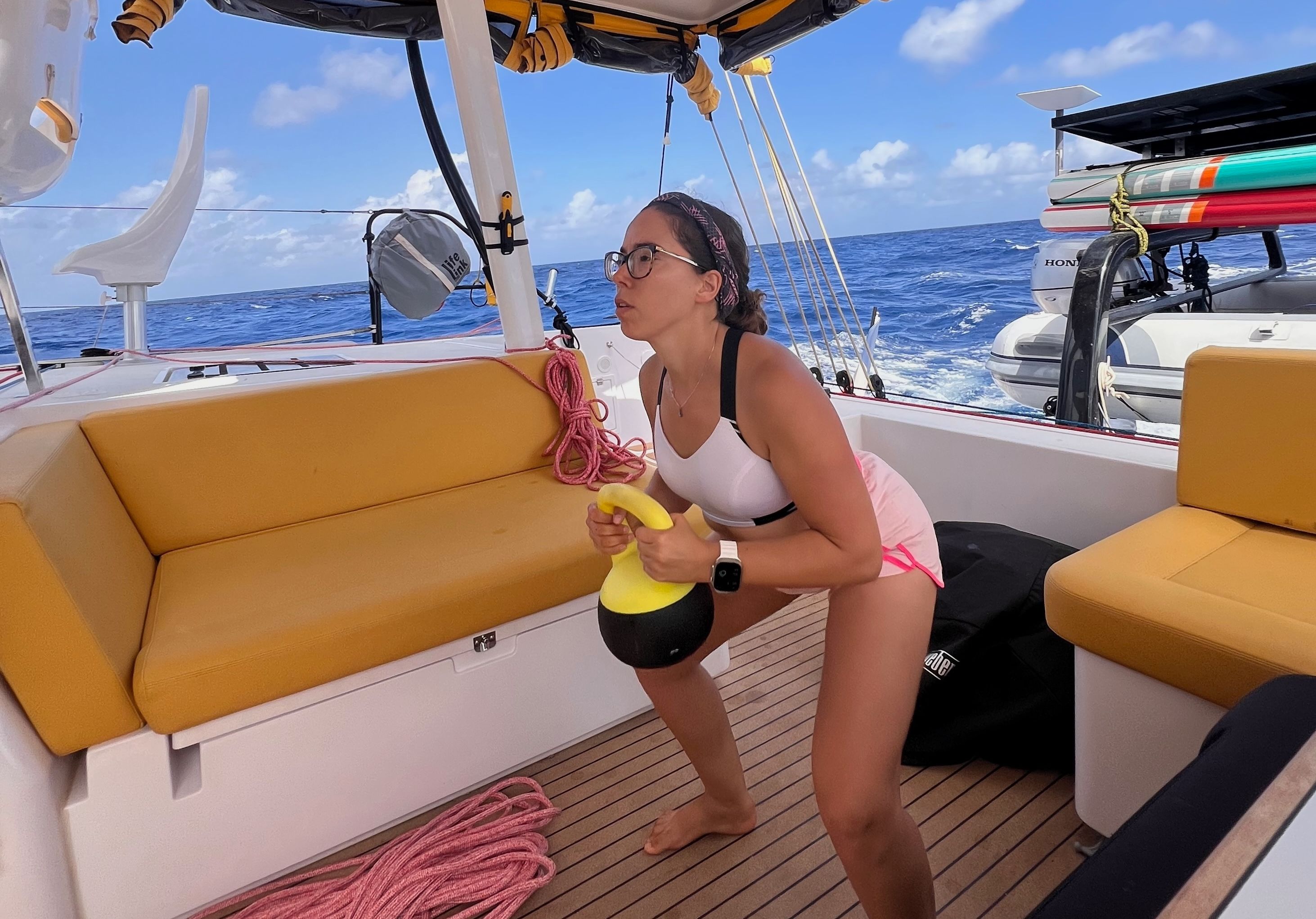
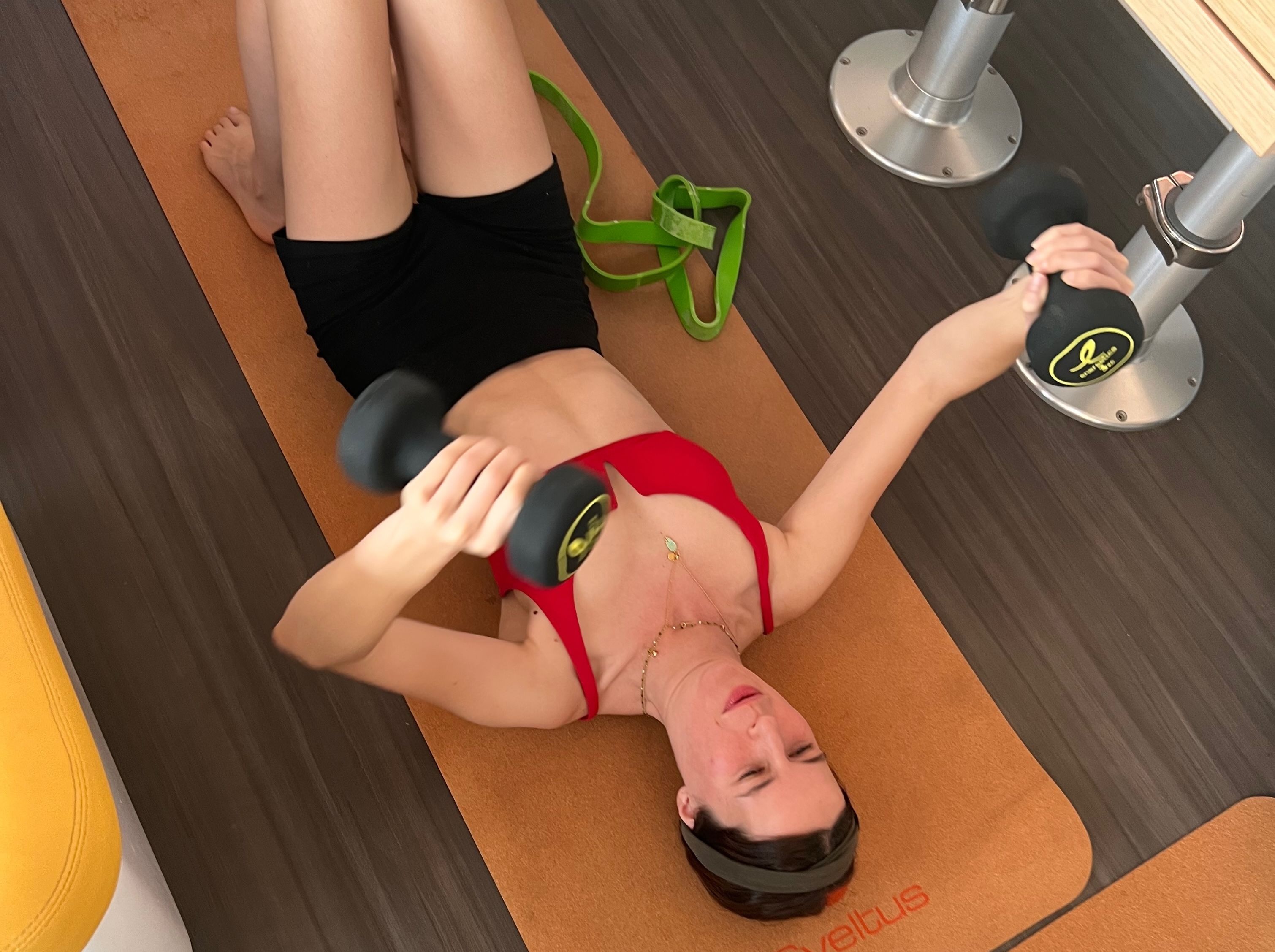
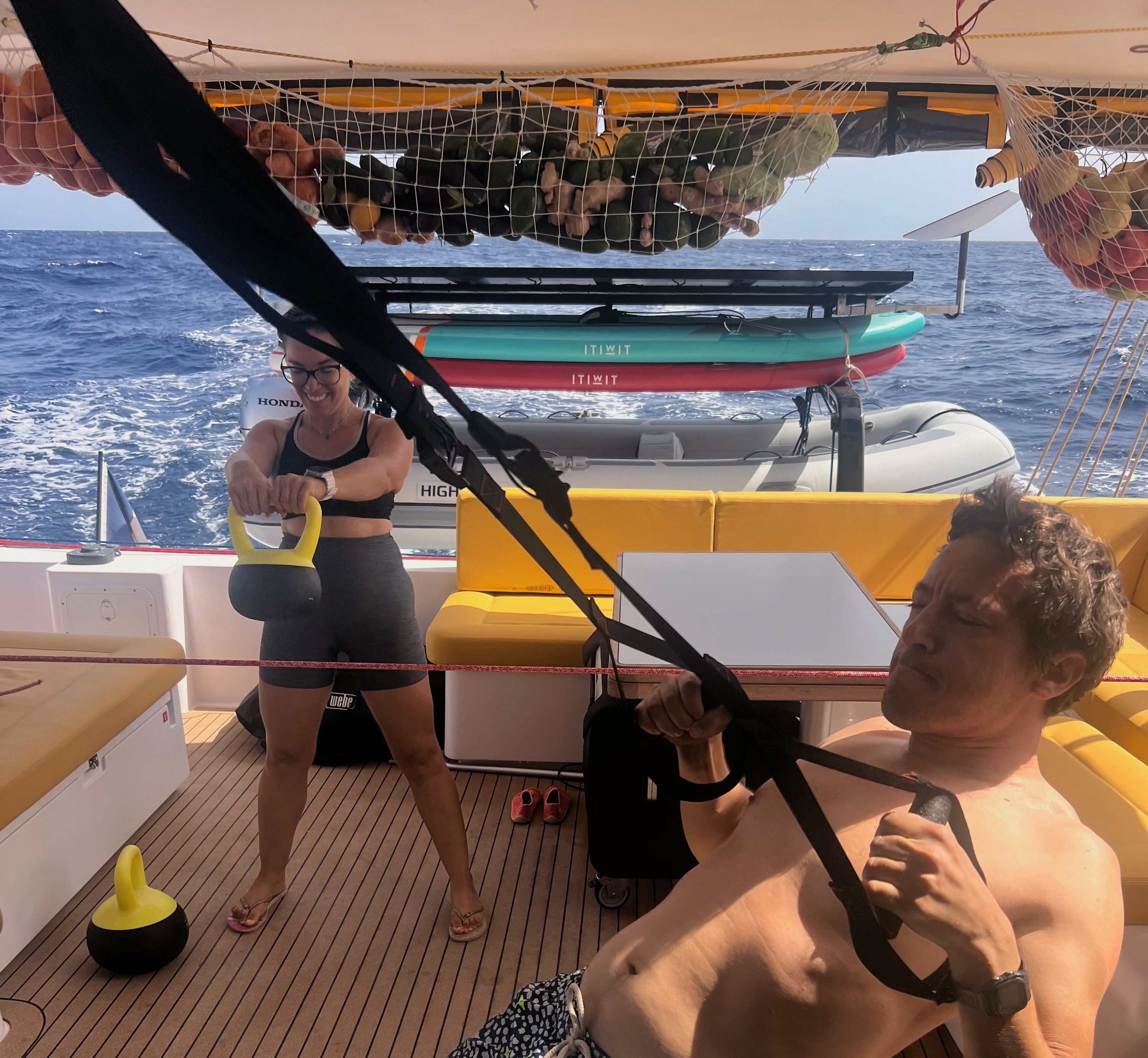



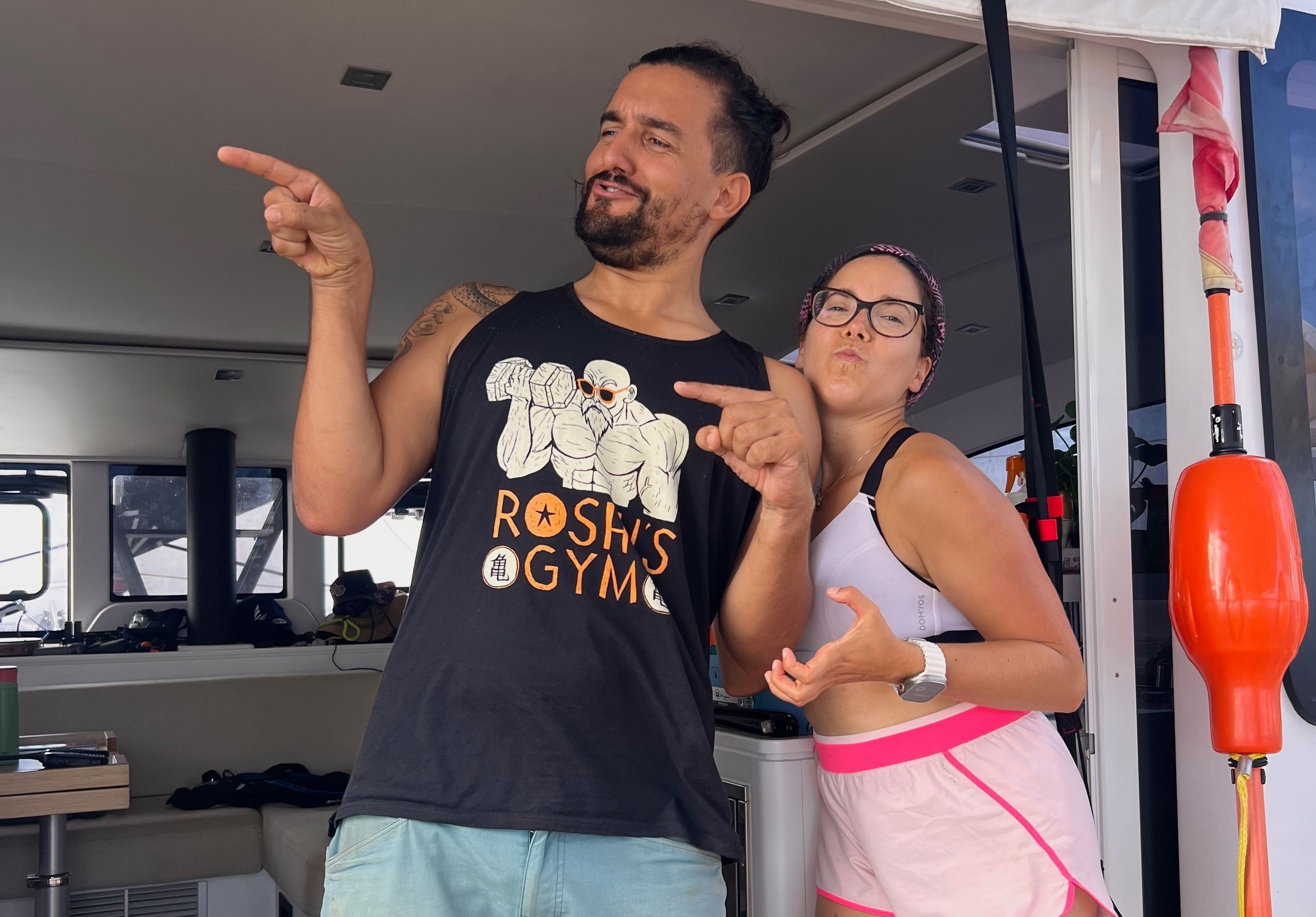

It’s amazing how creative you can get! Push ups against the counter, TRX on a pad-eye… and there you go!
⛵️ The passage#
🌤️ Daily rounds#
In a long passage like this, we knew we needed to attend to the boat preventatively. We kept checking for chafe and did boat rounds in the morning. As explained in a separate post, these rounds paid off! We found a crushed pin at the level of the gooseneck but, because we checked before any symptoms arose, we could replace the pin and tighten the nut, without any further trouble coming from this piece of equipment.
This particular episode was an interesting one. Our motto is: “Good enough is not enough”. But it is sooo easy to get lazy and be fooled by overconfidence! Fortunately, David understood the urgency of the intervention and so, the manoeuver and repair could be executed without a problem.
🏗️ Study your rigging carefully#
We had another jammer fail us on this passage. Fortunately, we make a point of leaving lines being used on the winch. Thus, nothing serious happened (and we got to keep our sail this time).
To cut a long story short, our jammer was underdimensioned for our sail area. In addition, a halyard that should be installed as a 2:1 according to the mast builder was installed as a single line. This meant that the whole force of the sail was exerted through the line onto the halyard jammer, which eventually gave in. The halyard was sliding and we debated what to do. We took the gennaker down, cleaned the jammer, cleaned it again… but the line kept sliding. This meant plenty of chafe over the next days.
This was another interesting episode. As we just explained, “good enough is not enough”, but we were so sleep-deprived after a night running away from squalls… Fortunately, Inês snapped out of the tendency to become lazy, and we took the gennaker down until everyone had a rest and we could have another look at the system.
The take-home message message for us on this one is to always read the technical notes and manuals for all your boat parts. As time consuming as it sounds, it pays off! You end up knowing your boat that much better.
🌧️ Squalls#
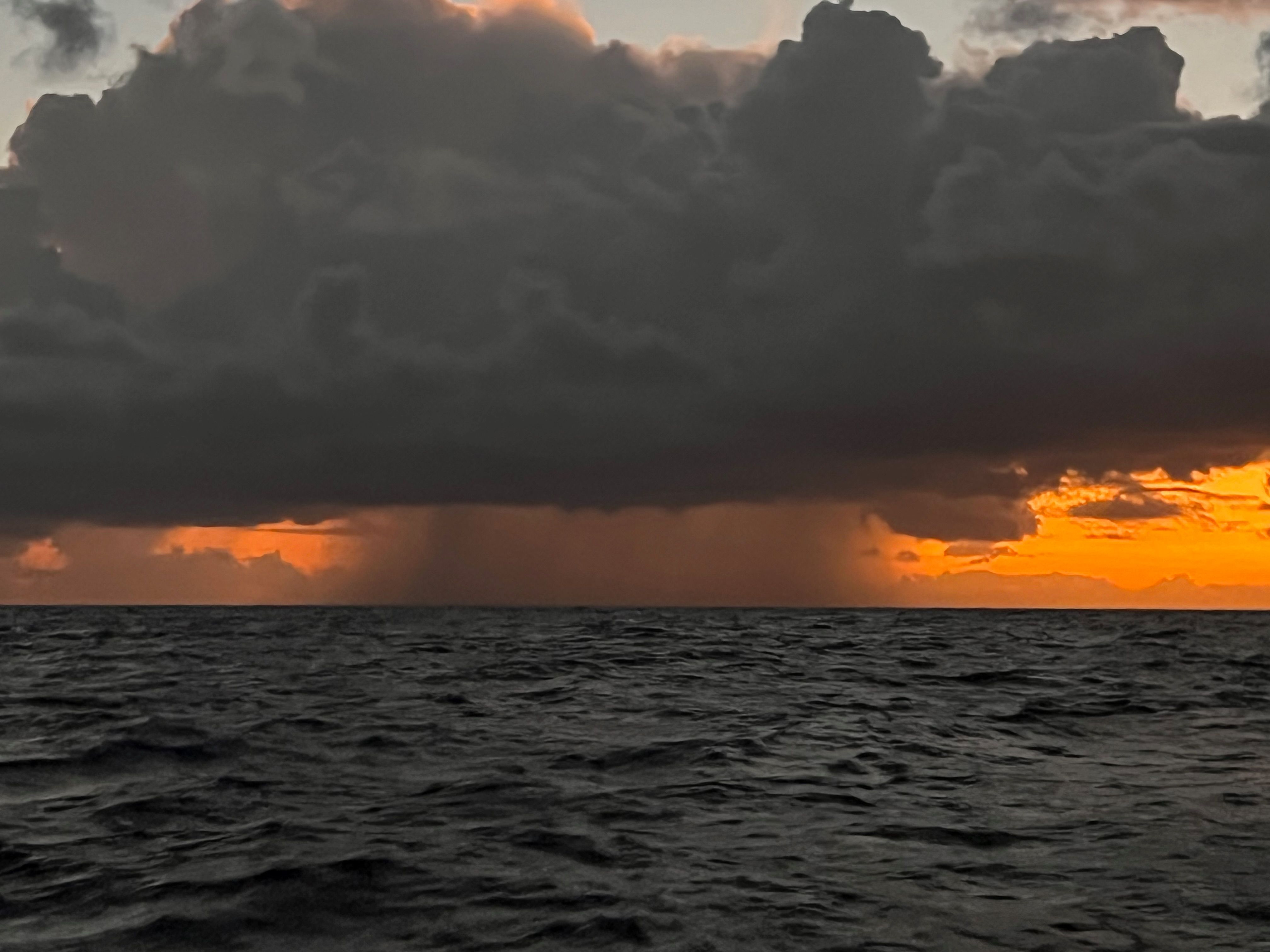
Squalls are an interesting topic of conversation. Some sailors welcome them, as they feel that (1) the boat will get a good wash and (2) they will bring some good wind (very tempting if there is little wind!).
Others tend to fear them: with squalls, you know you will get increased wind speeds, but you don’t really know how high the true wind speed will get. If you get caught with too much sail up, then it can quickly turn into a scary situation. In leg 1, Inês saw, during her morning shift, the wind speeds go from ~20 knots to 36 knots in 1 second. We had a third reef on the main and no headsail (go here to know why), so there was little to do, but it still came as a surprise.
We monitored squalls quite closely and were bent on not getting hit by one. We had read enough messages from other boats who had been hit, and described their experience as downright frightening. During the day, we kept an eye on the horizon. During the night, we monitored our radar closely and adjusted course (but some nights were very busy… some even including engines and negative VMG 😅!).
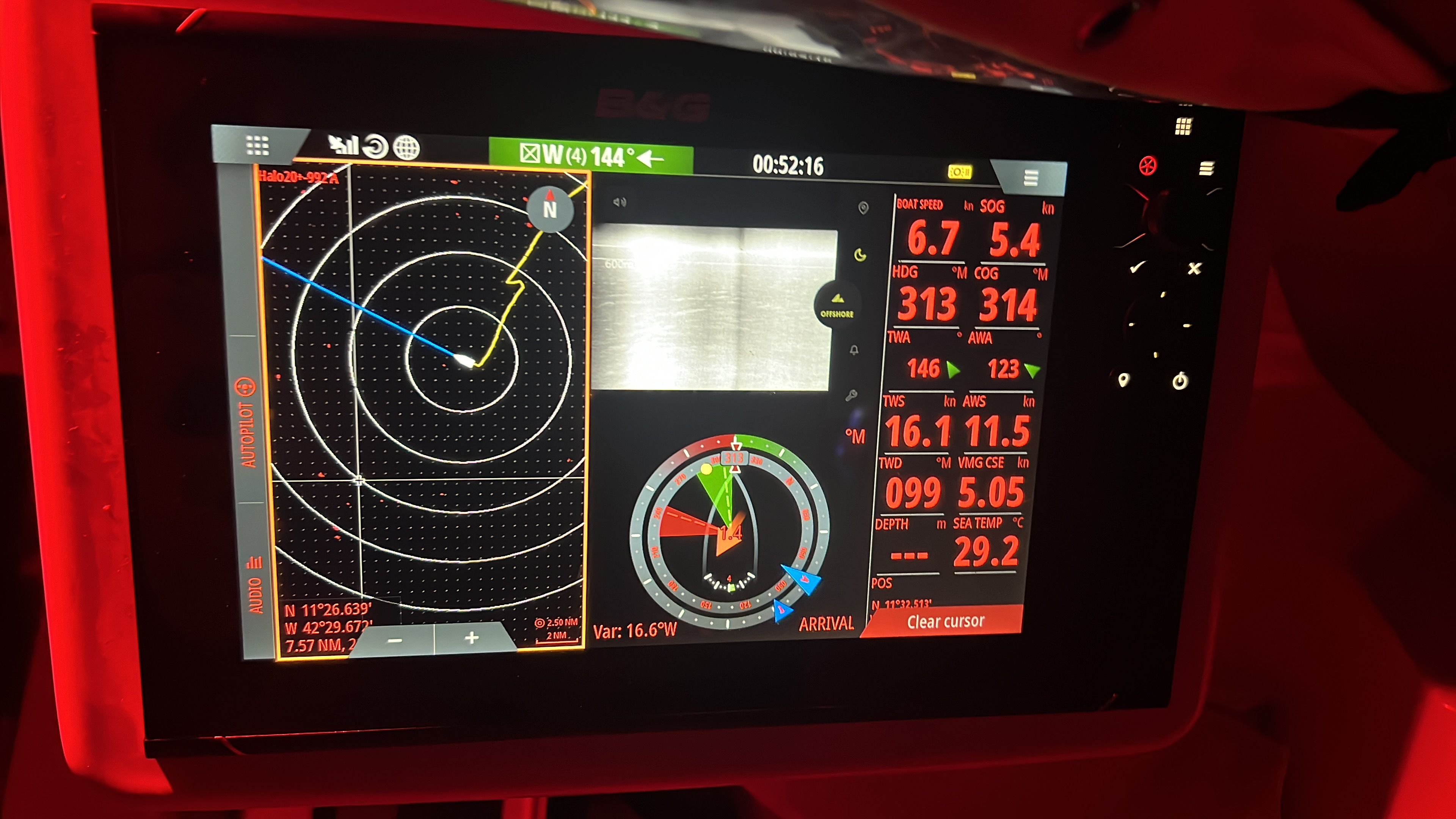
🌩️ Thunderstorms#
The second week offshore was also marked by the possibility of being hit by a thunderstorm. We were not keen on going through it, so we adjusted course to go further South and avoid it as much as we could. In addition, during the nights where the risk was the highest, we adopted (and wrote down) the following protocol, if lightning was deemed too close or avoiding a thunderstorm impossible:
- Place portable communication and electronic devices (VHF, Iridium Go! Exec, iPads etc) in the oven;
- Disconnect 220 V devices that are not needed (e.g. oven);
- Turn off inverter
- Disconnect Starlink
- Unplug everything that is not needed
- Make sure engine batteries are off
- Turn off B&G screen on port side
- Report in ARC+ Telegram (so other boats know what the weather is like in our location)
Beforehand, we would:
- Charge all the head lamps
- Charge the spotlight torch
- Charge all other important devices
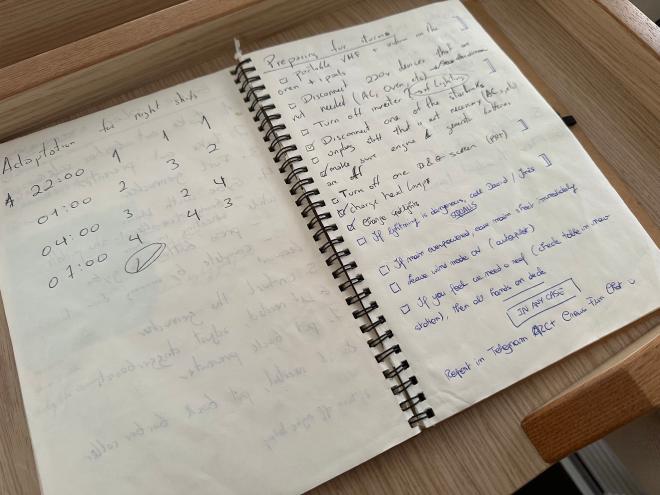
🔭 The ARC+ fleet#
Most of the fleet crossed and arrived safely, but there were challenges.
Halyards snapped, electrical problems arose, but the most notable case was Hilma, who dismasted and was forced to motor for several days back to Mindelo. Note the importance of Starlink as you read the story. In fact, the first means of communication that worked for them (meaning with which they could effectively communicate with someone) were precisely the ARC+ chat groups. By reaching out to these chat groups and thus to other boats, we (the fleet) were able to help the Hilma crew contact the ARC+ team, as well vessels near Hilma (using the YB tracker data). Read Hilma’s incredible story here.
As for the rest, here are some images of happy moments on:
- Pinnacle
- Møyfrid
- Blue Wonder
- Spirit
- Mangata of London
- and many, many other wonderful boats!
🪽 Ode to the flying fish#
Out at sea one starry night,
On deck, in awe of the ocean’s might.
Crossing the Atlantic, what a thrill,
Nature’s canvas, sailor’s skill.
Lost in thought, absorbed in peace,
When a sudden crash broke my release.
A fish, airborne, hit with a splash,
Interrupting its skyward dash.
Flapping wildly, a fish astray,
I lent a hand, saved the day.
Back in the water, safe and sound,
A deed well done, feeling quite profound.
But come the morn, to my surprise,
Fish everywhere, to my bewildered eyes.
Between pulleys, under seats they’d be,
These fish, mischievous, a sight to see!
Tail up, in the cook’s old pan,
One in a hammock, dreaming a plan.
Behind the wheel, steering the ship,
These fish, oh my, they take a trip!
Atop the mast, a daring feat,
Fish as jesters, their gags complete.
Amongst the charts, a fishy find,
They sneak and tease, they’re one of a kind!
In boots and buckets, oh, what a spree,
These fish, oh where couldn’t they be?
From sail to bow, no space too tight,
The fish brigade, their mischief takes flight!
✨ What will we miss most?#
The endless nights at sea, with the stars shining bright, and the feeling of gliding into space 🪐. Or the nights where the moon shone so intensely, that we could see the water. And sleeping outside, oh sleeping outside!
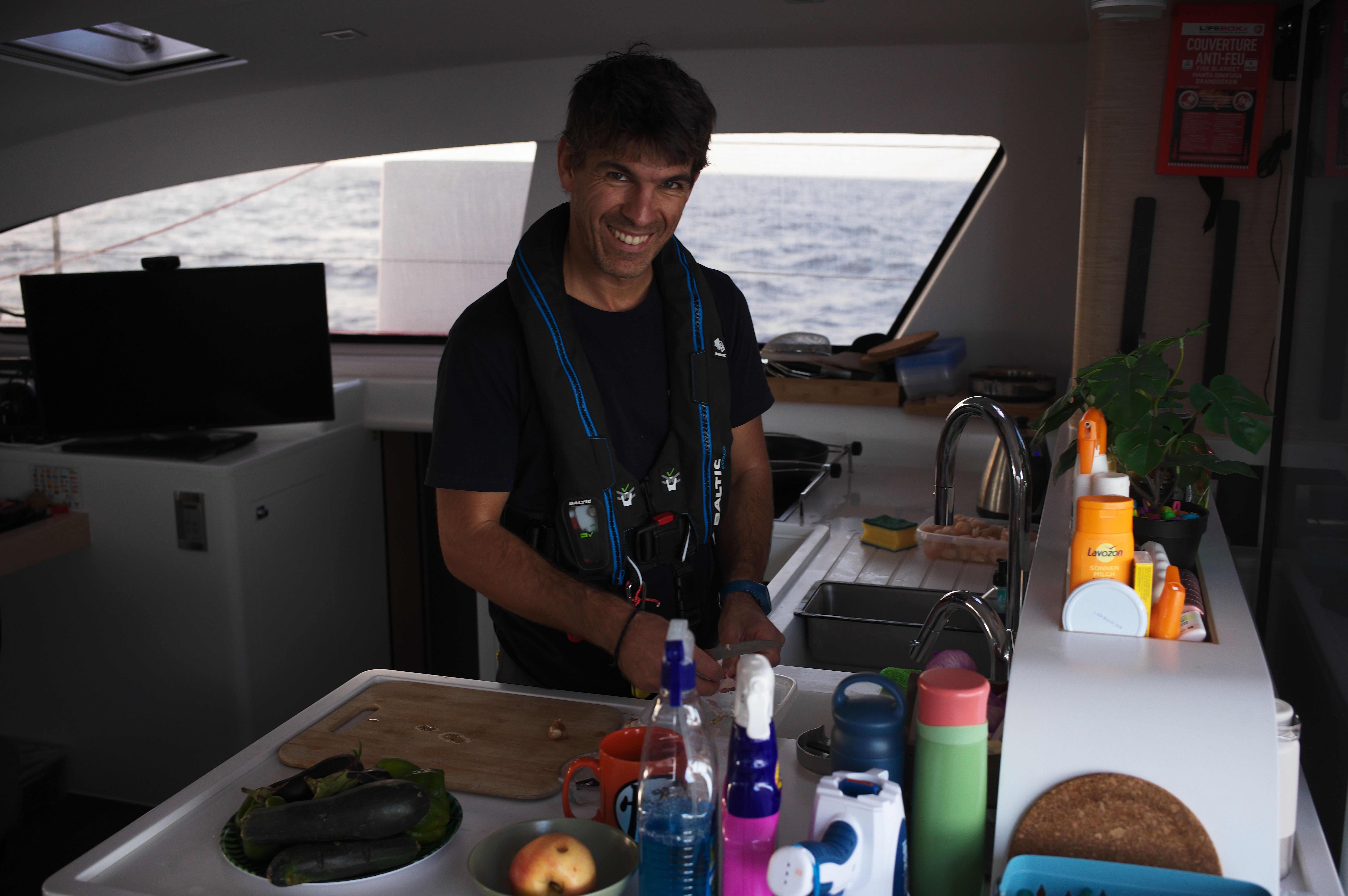
Thank you Camille, Ben and Arnau, for joining us on this passage and making it so special ❤️
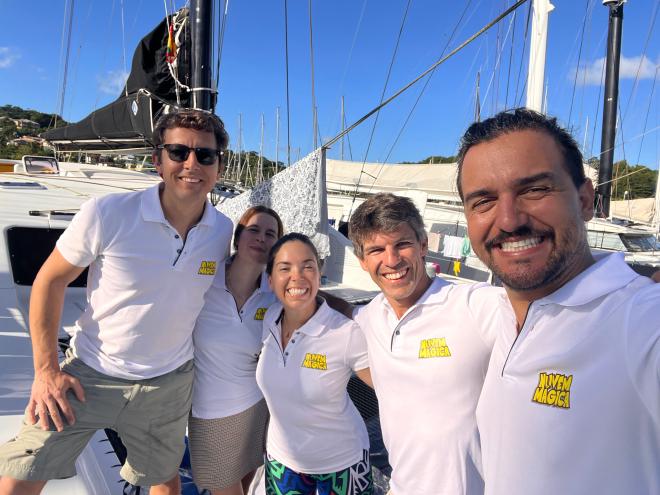
Write again soon,
Your Nuvem Mágica

